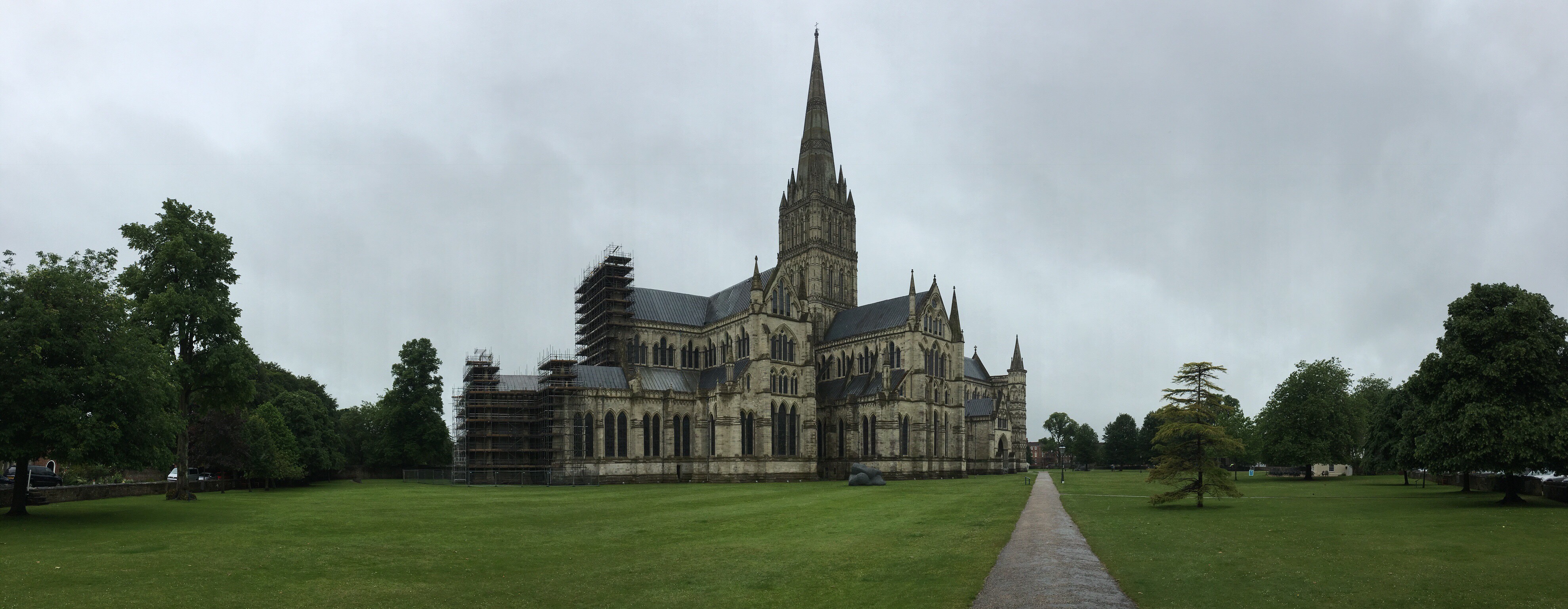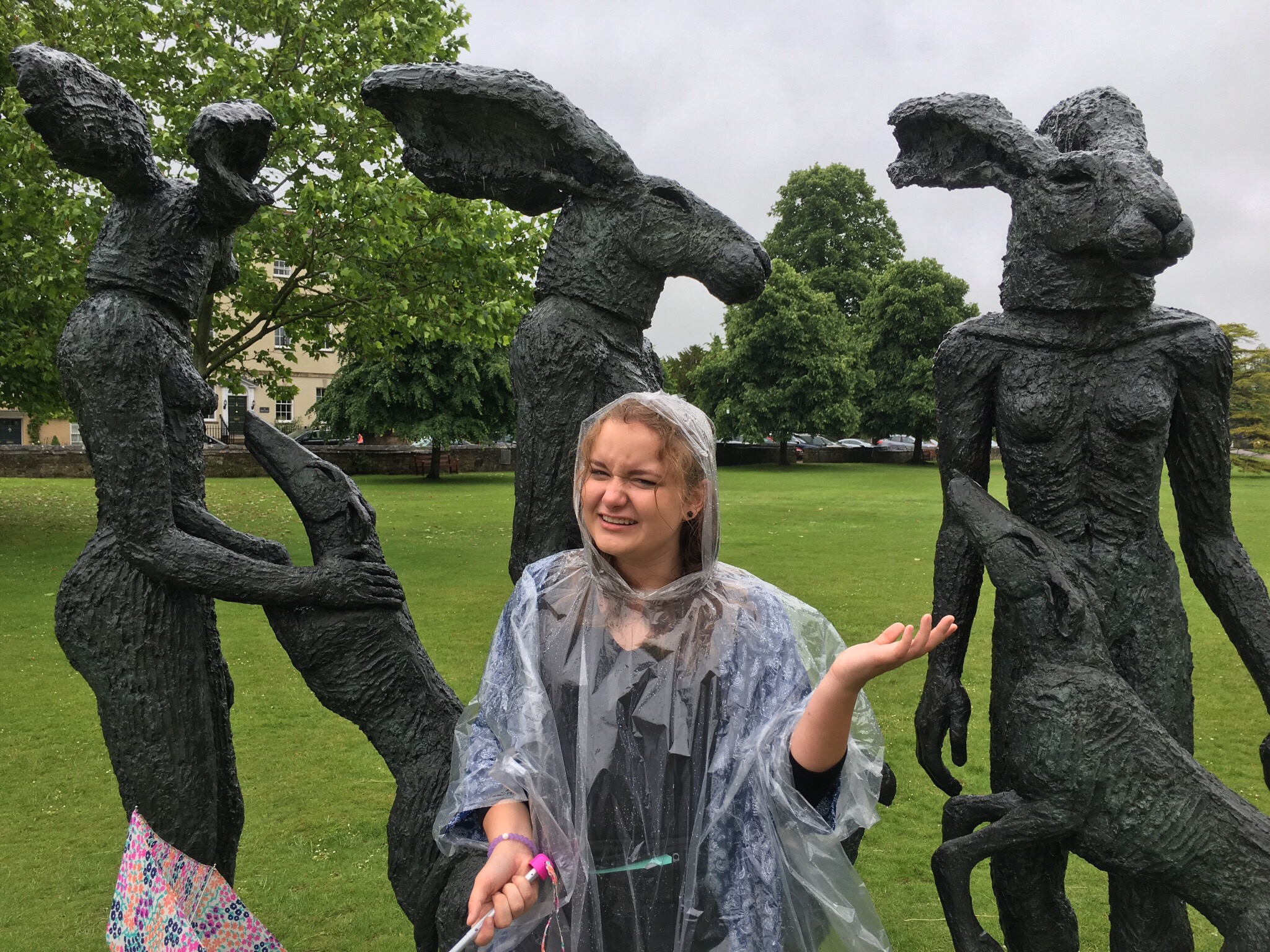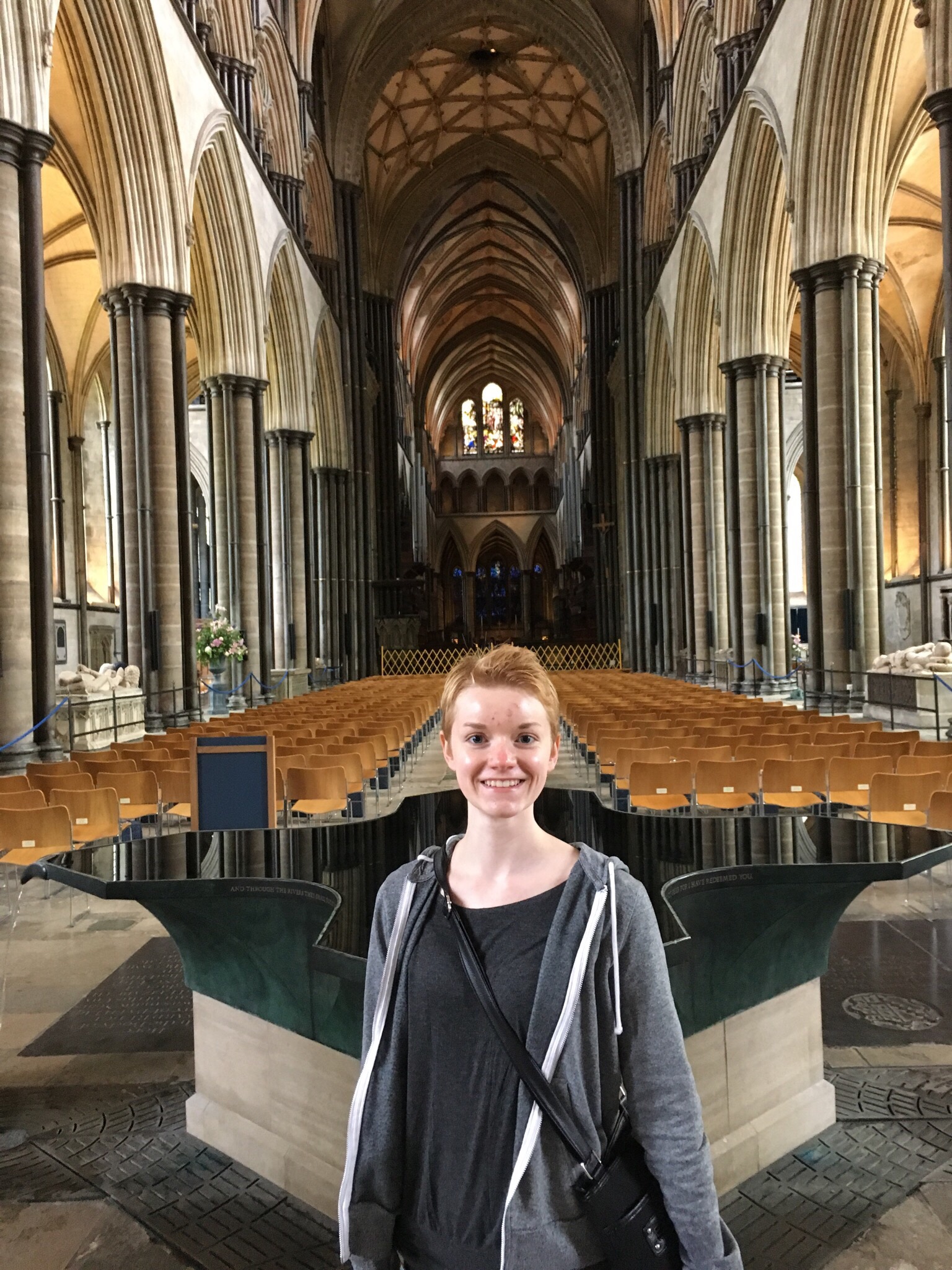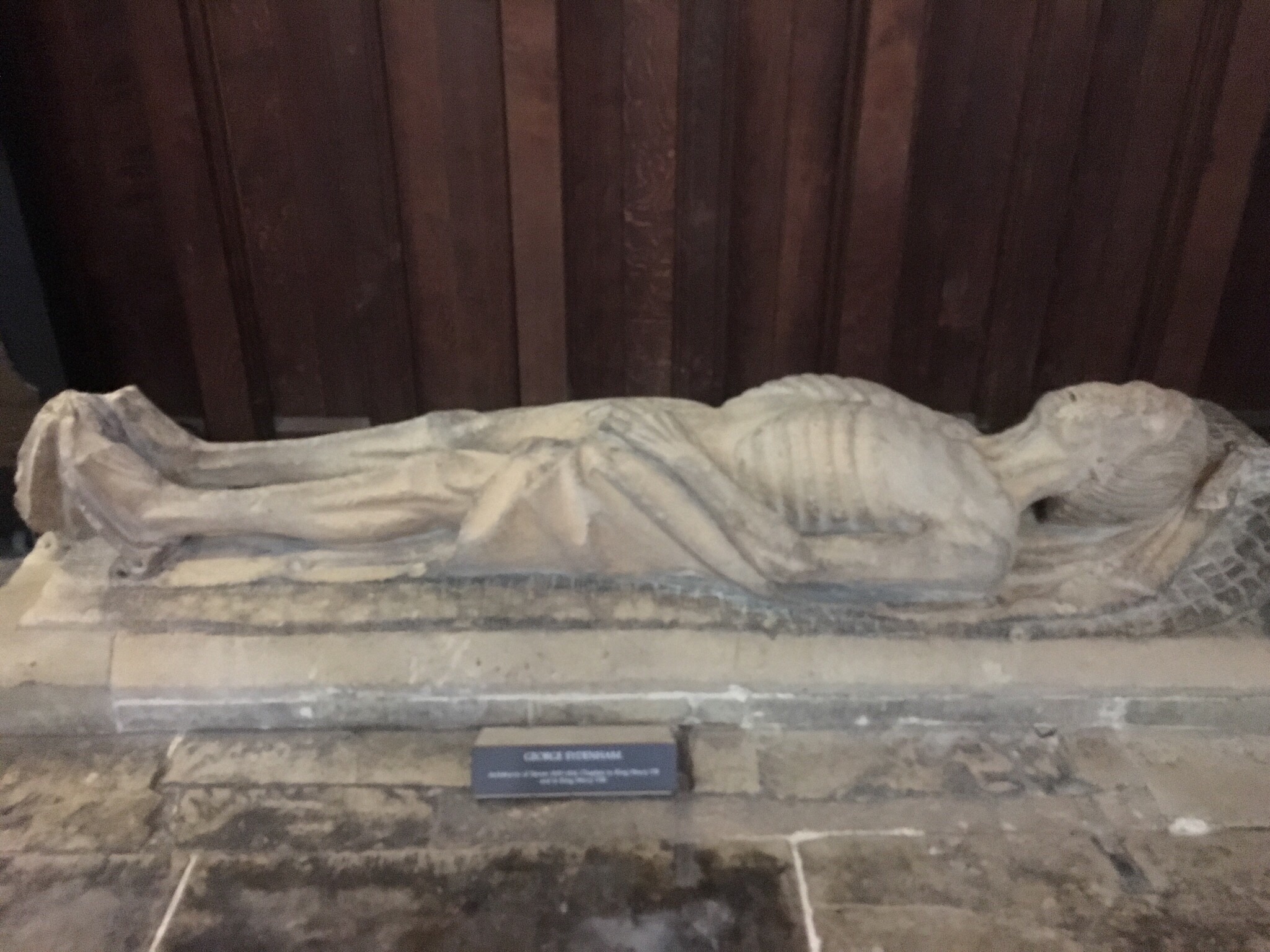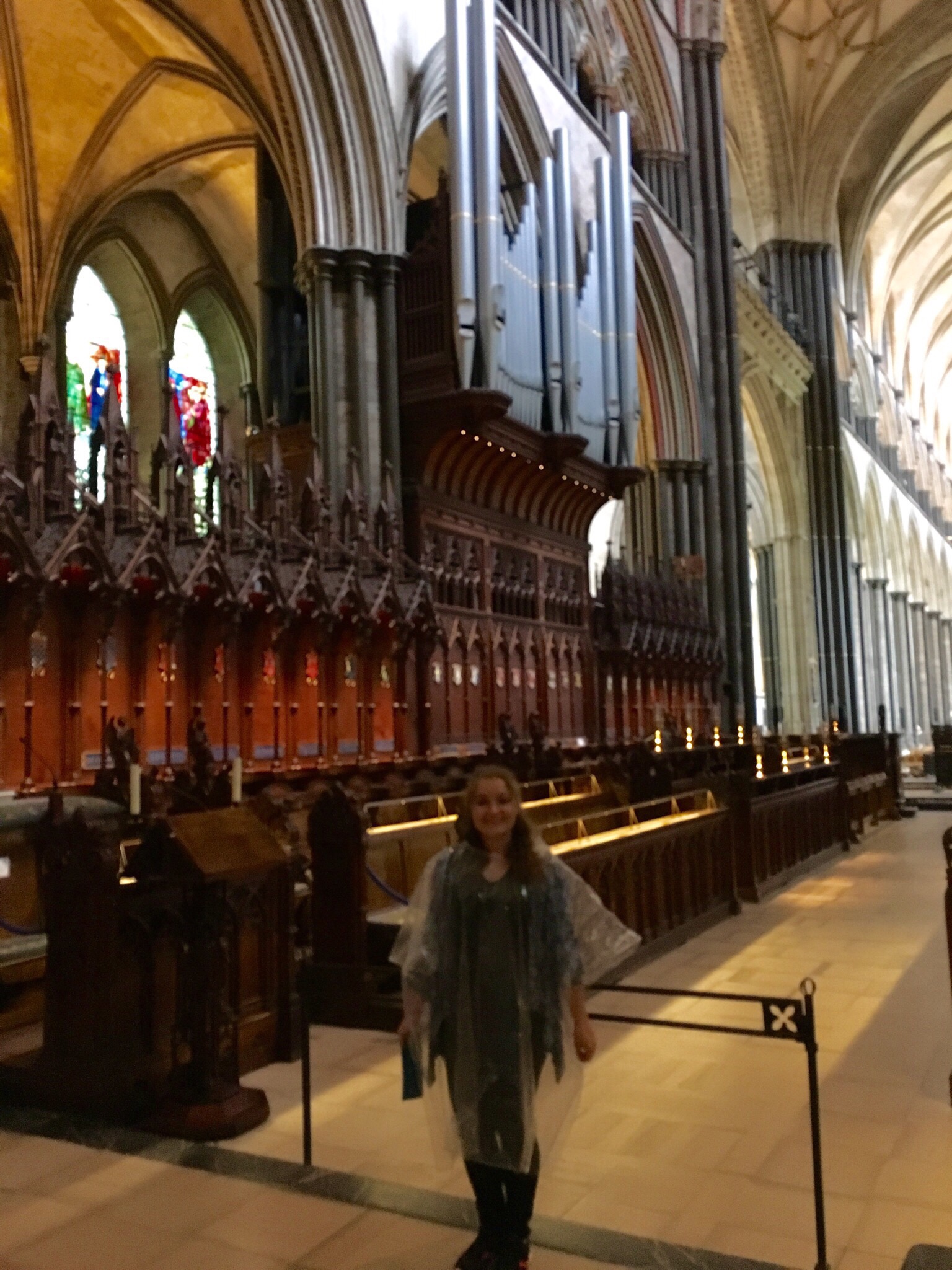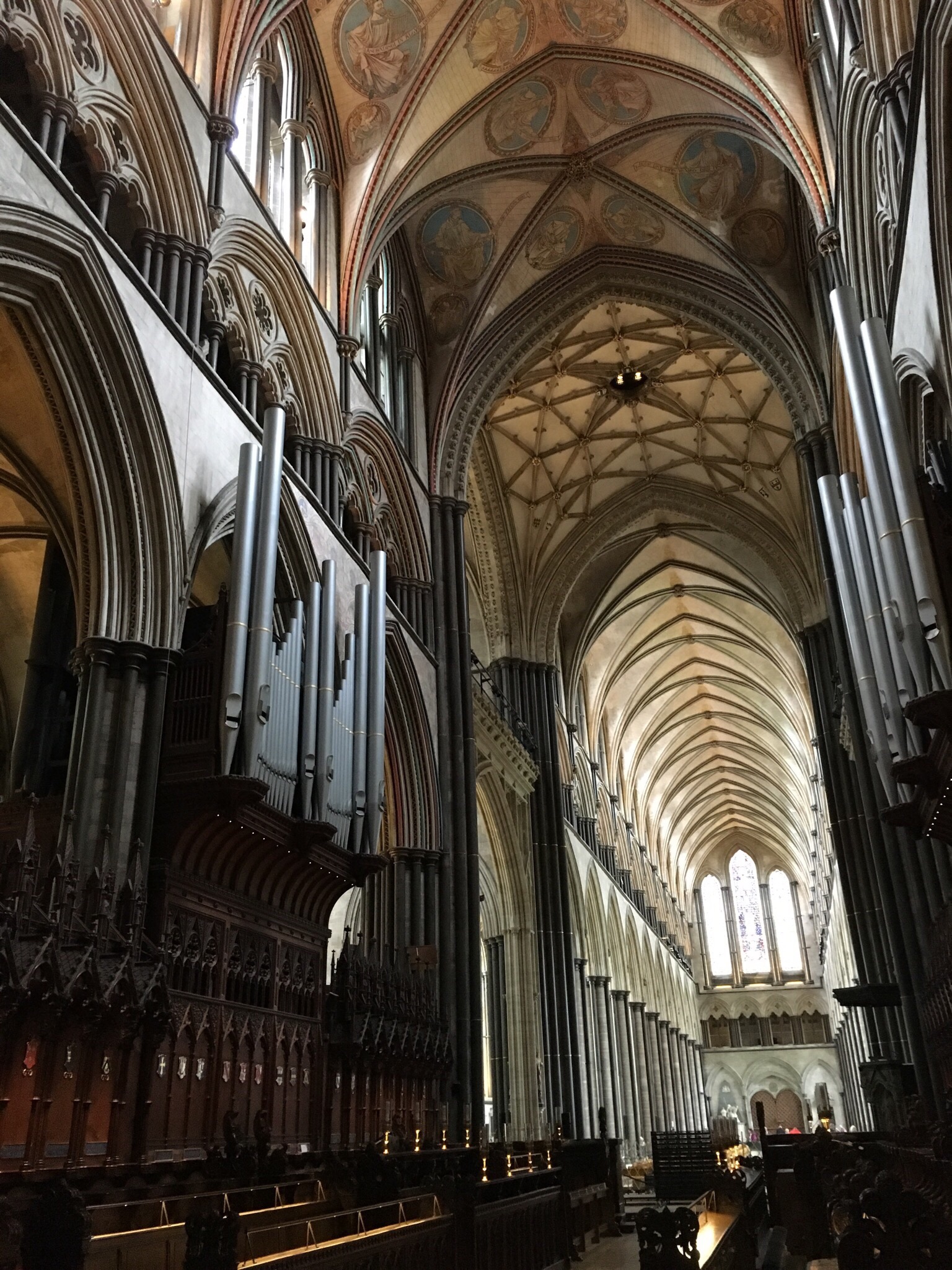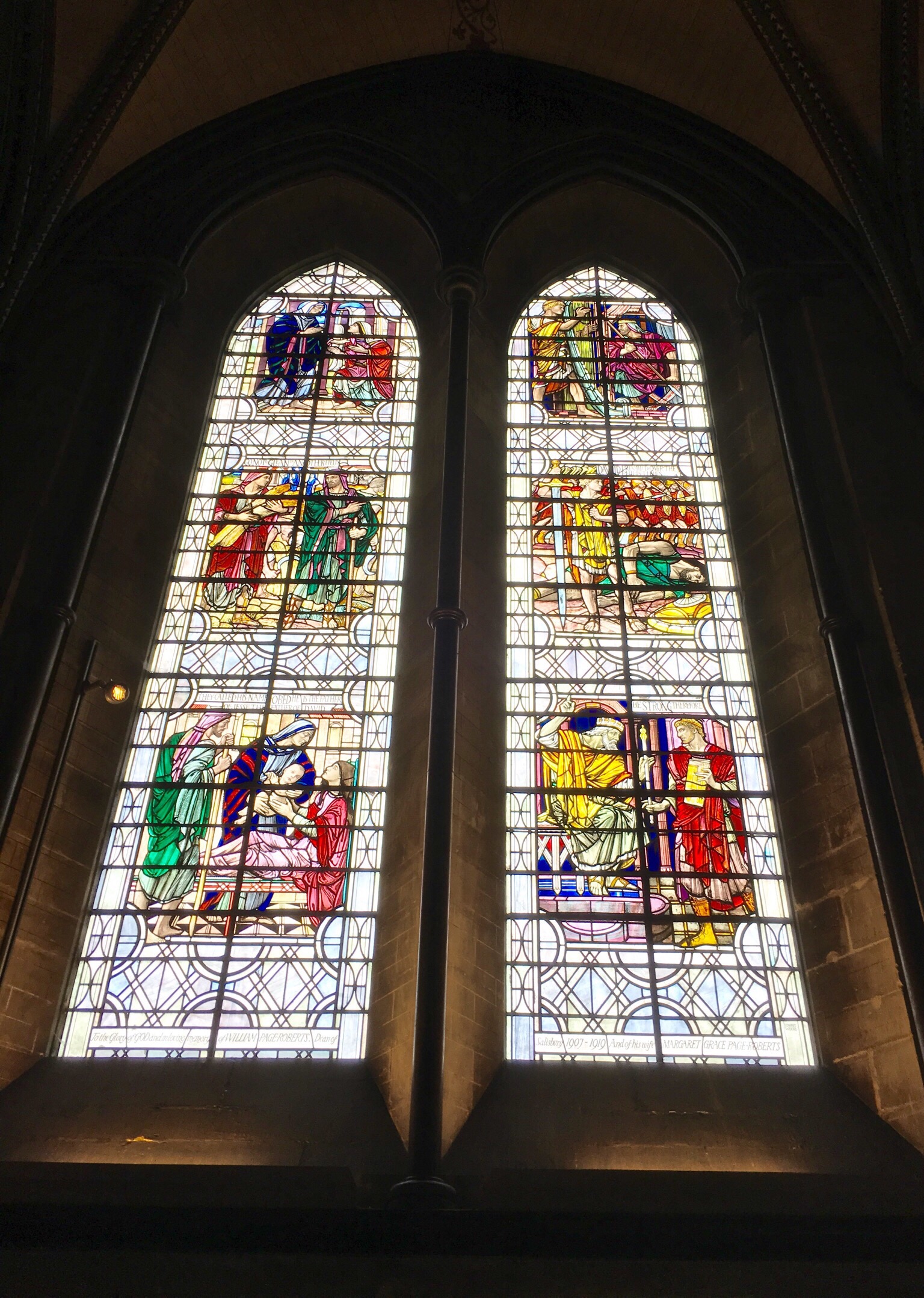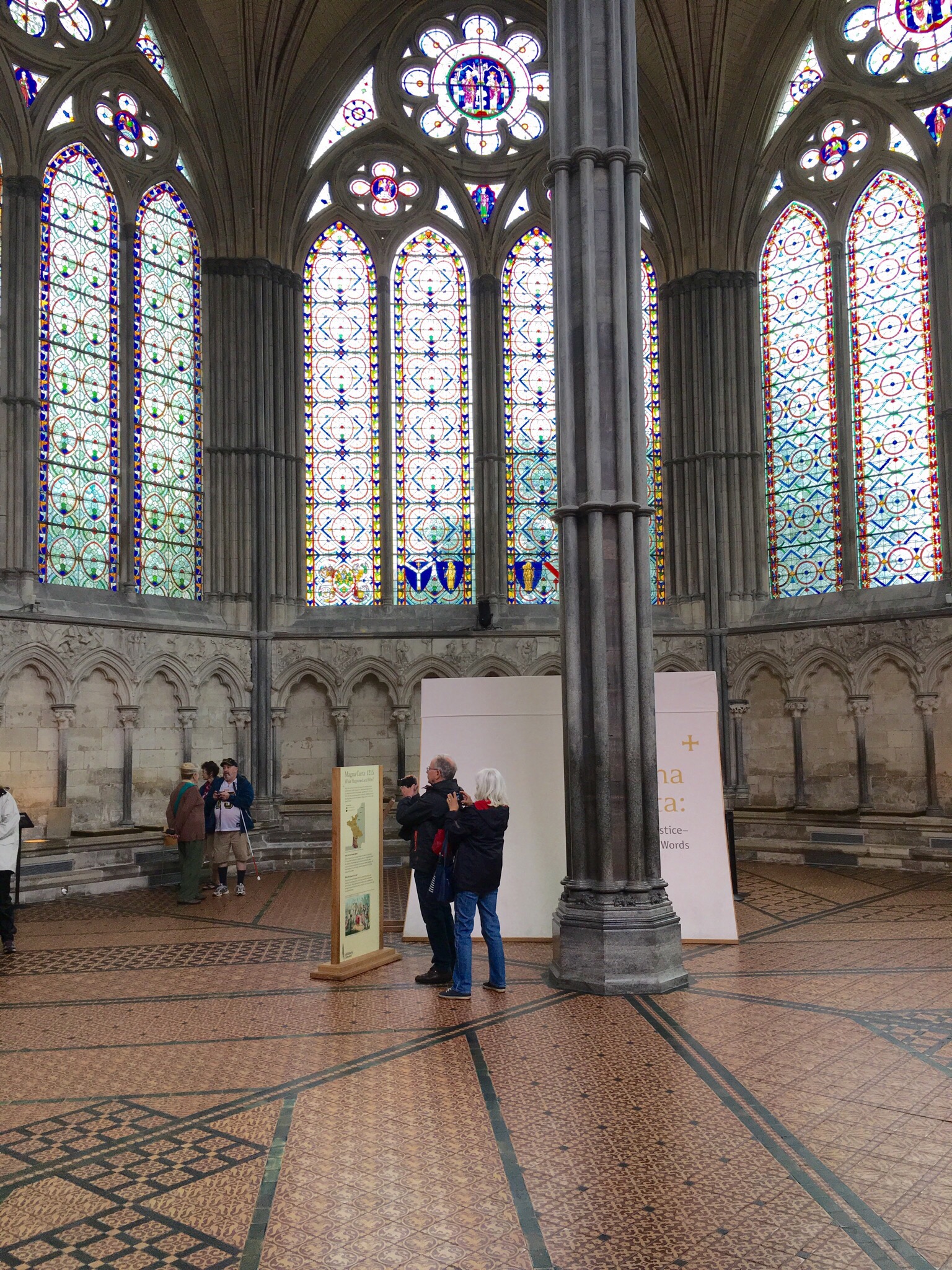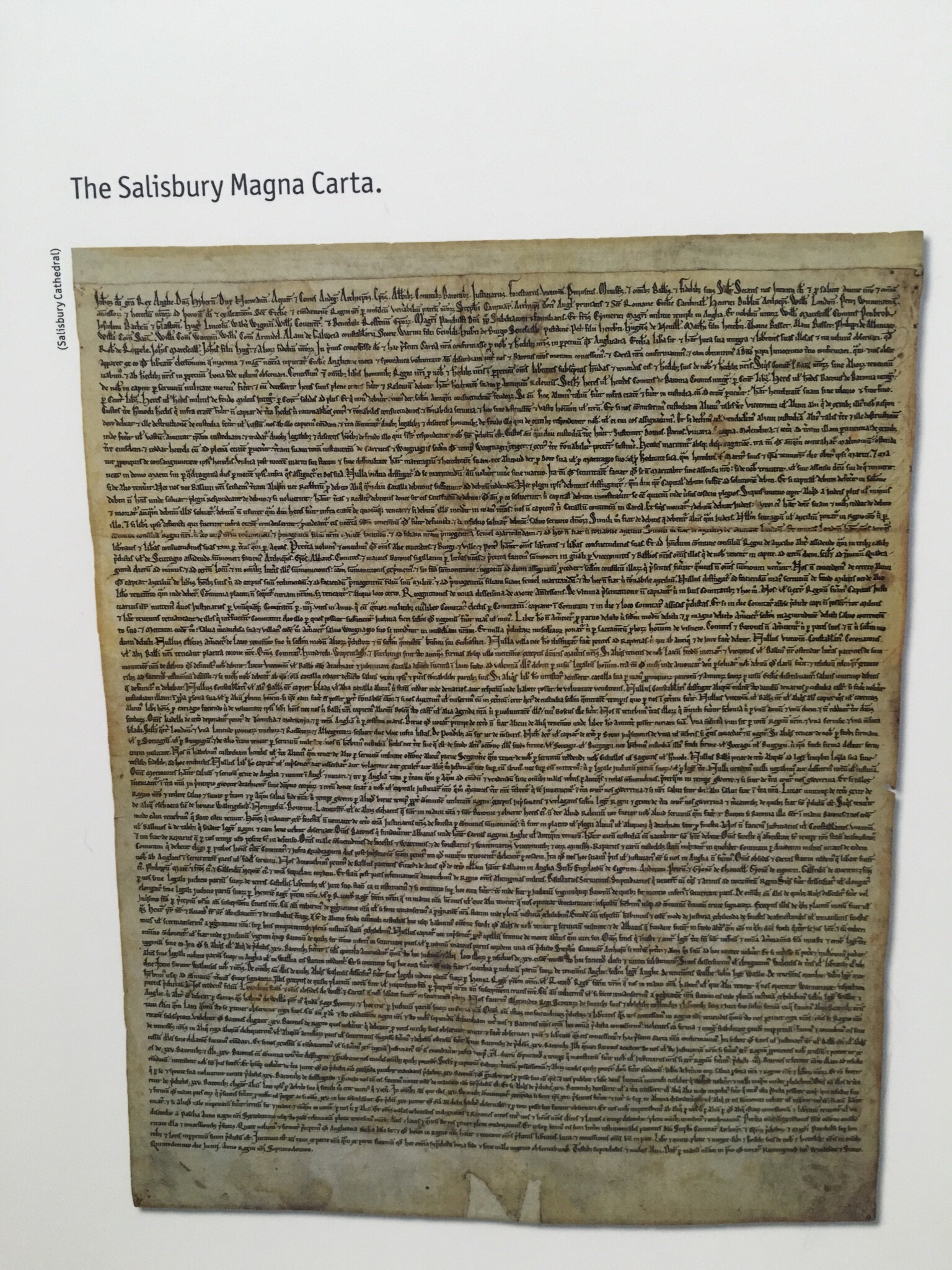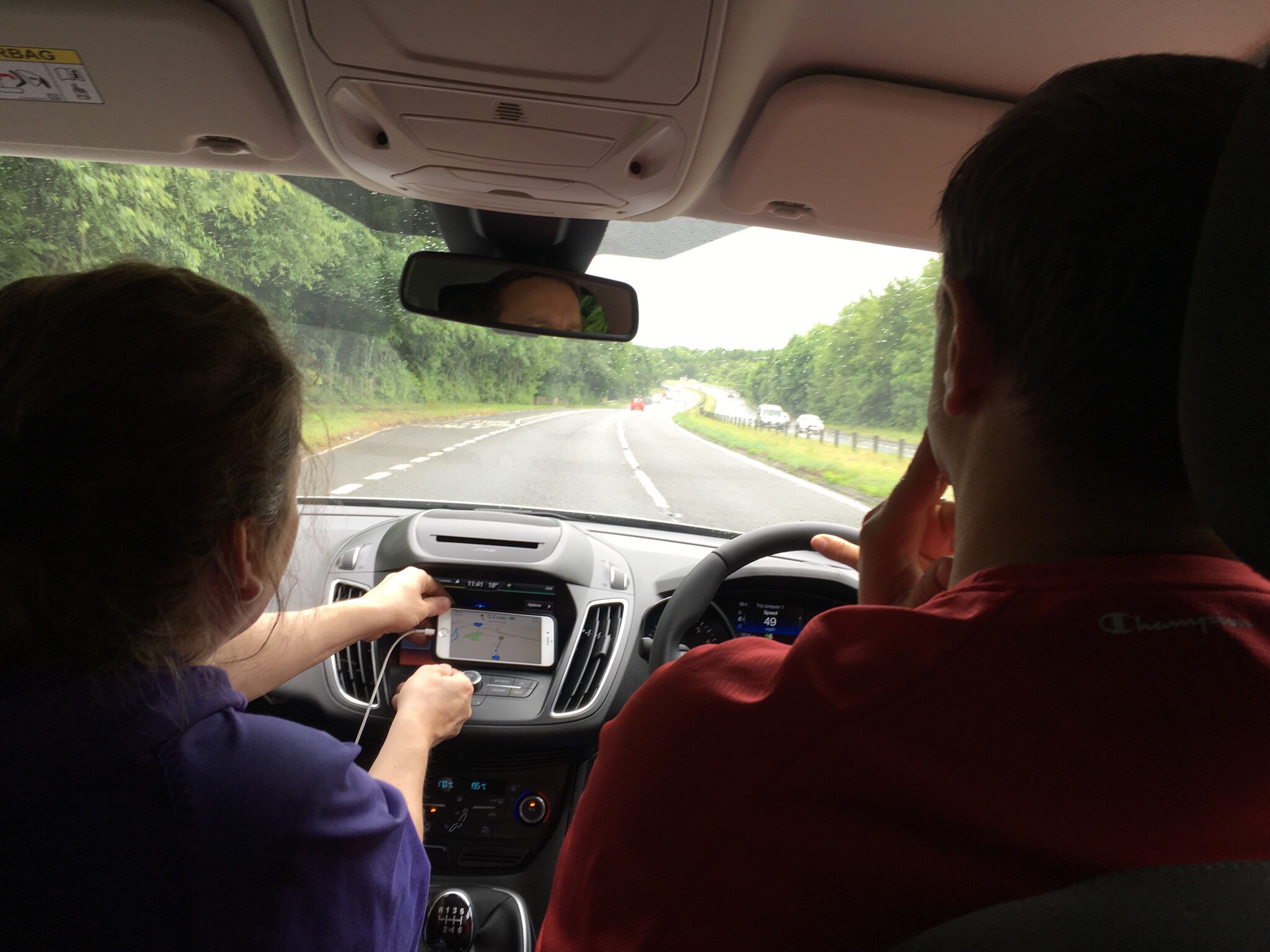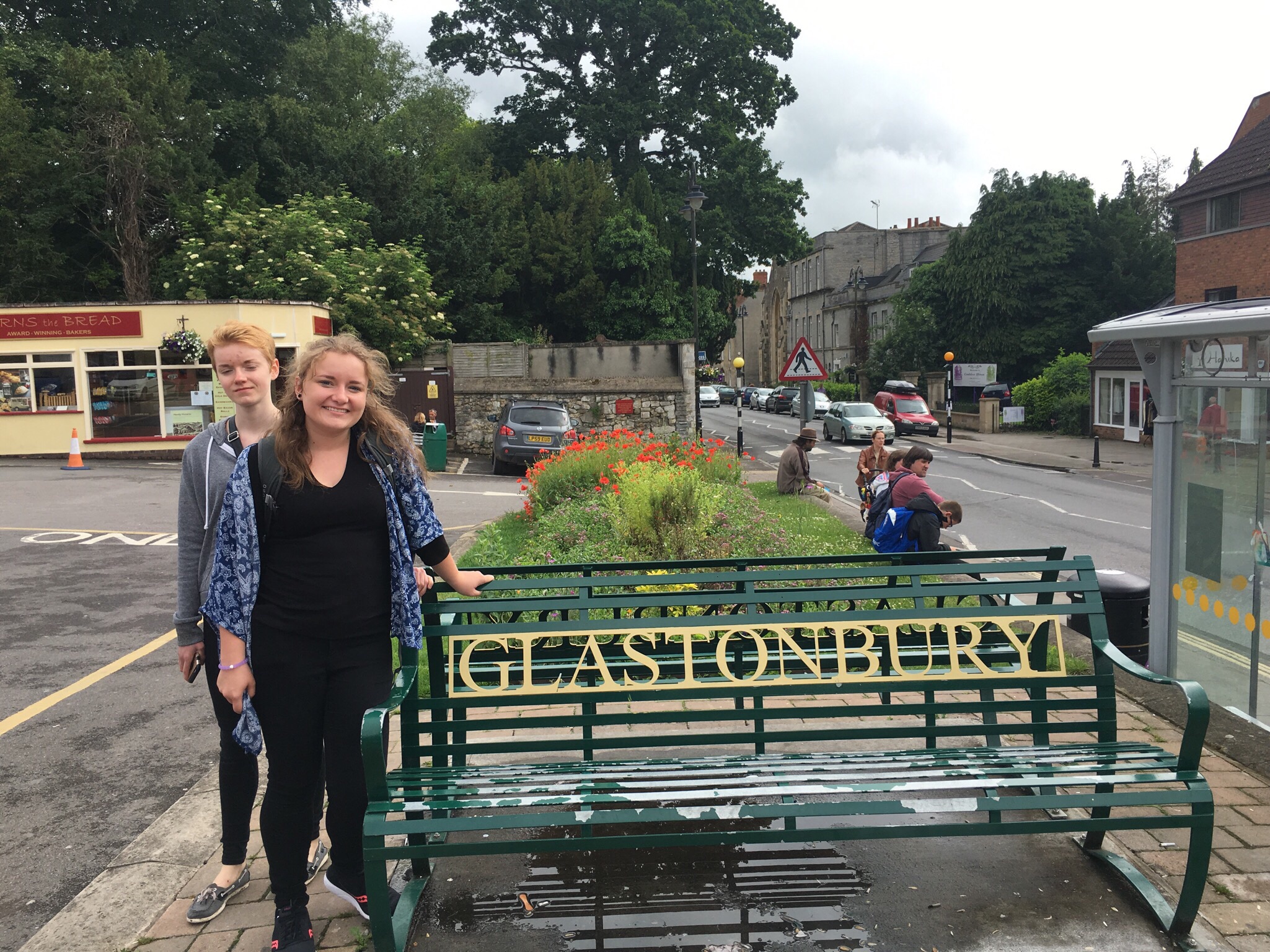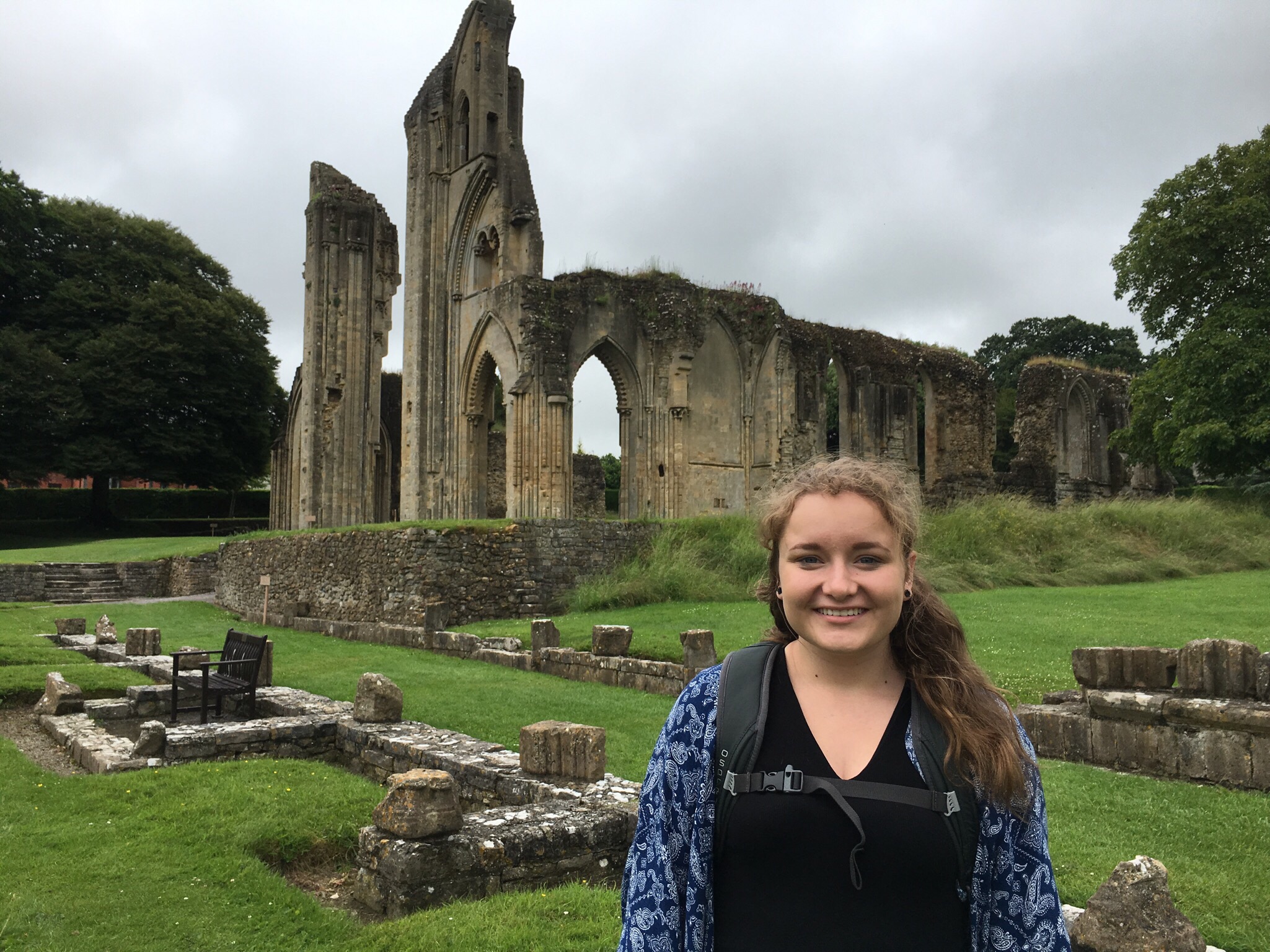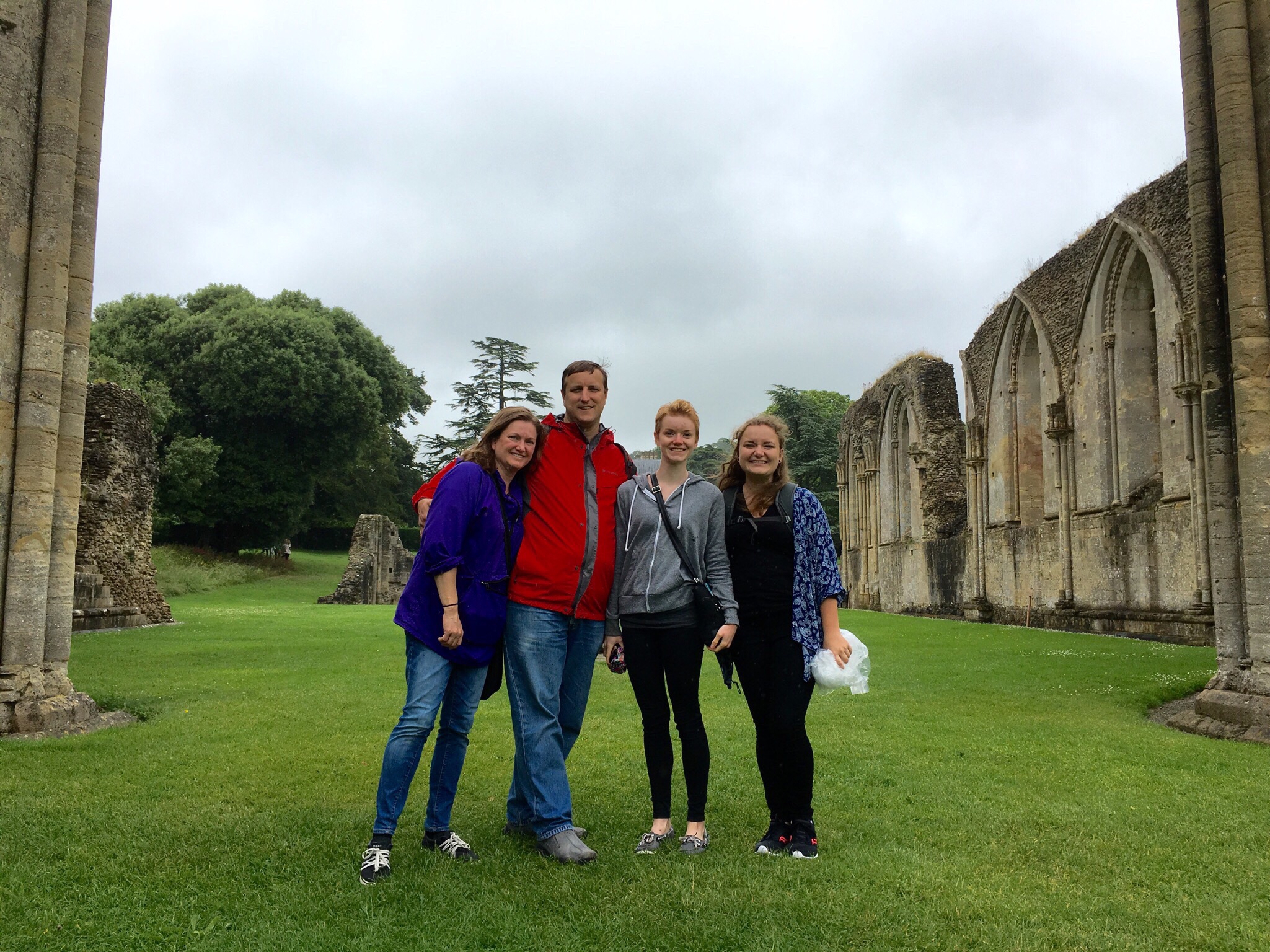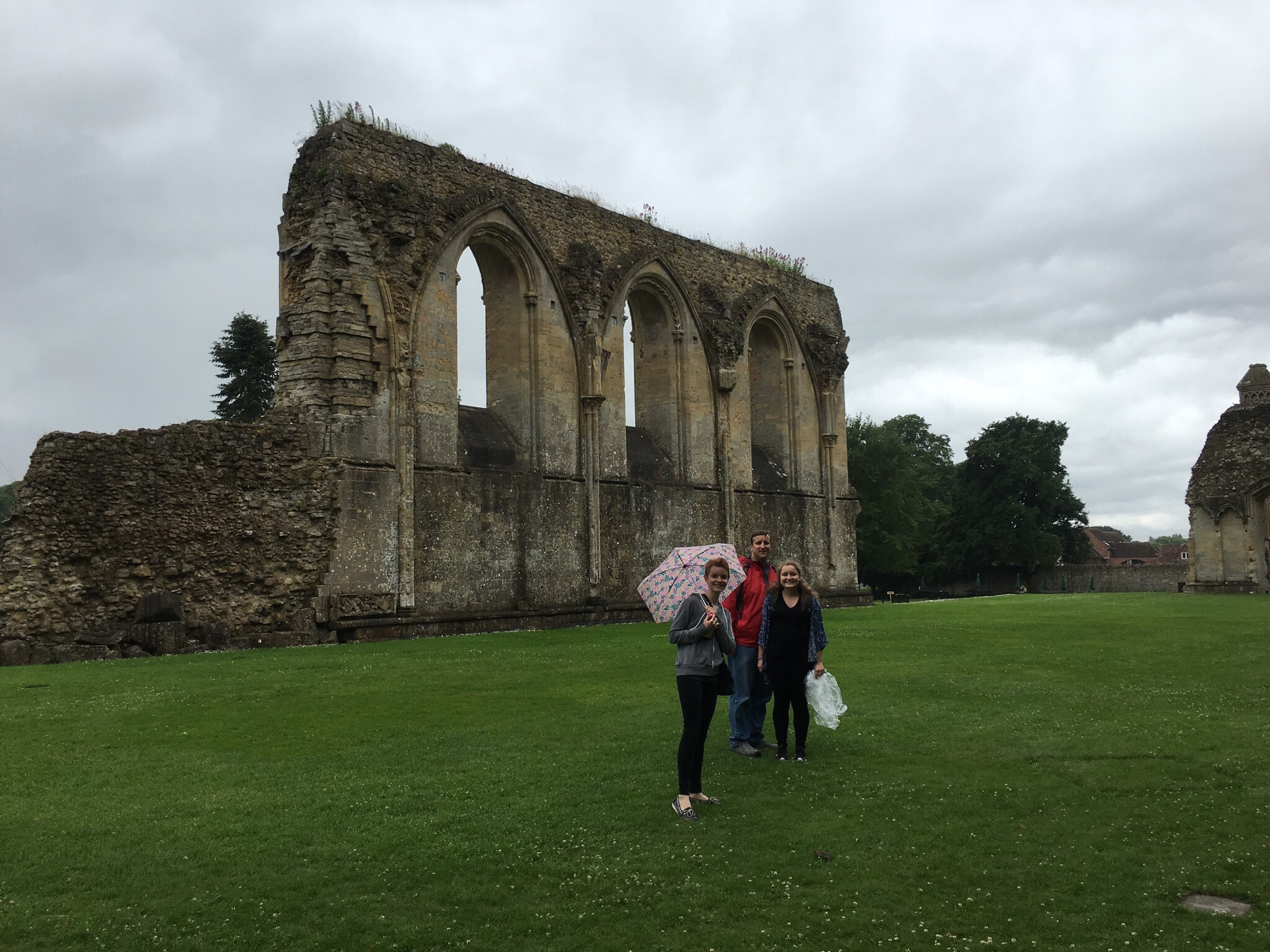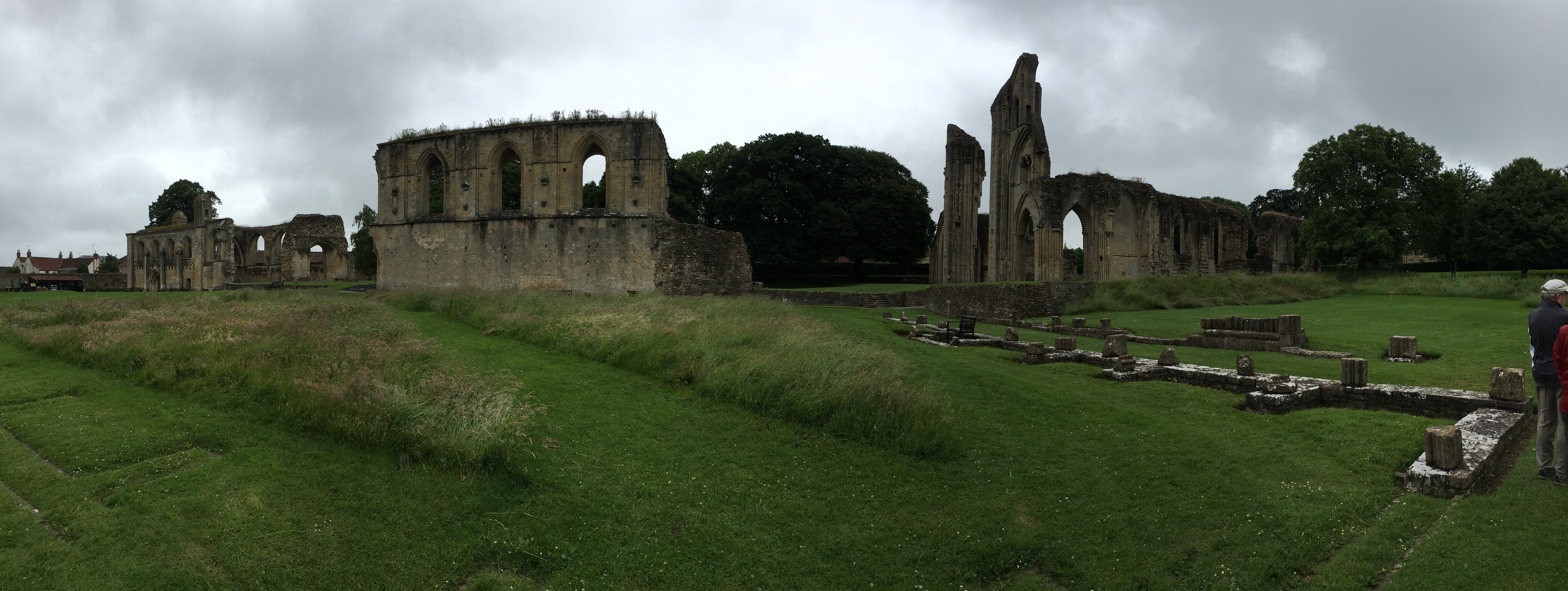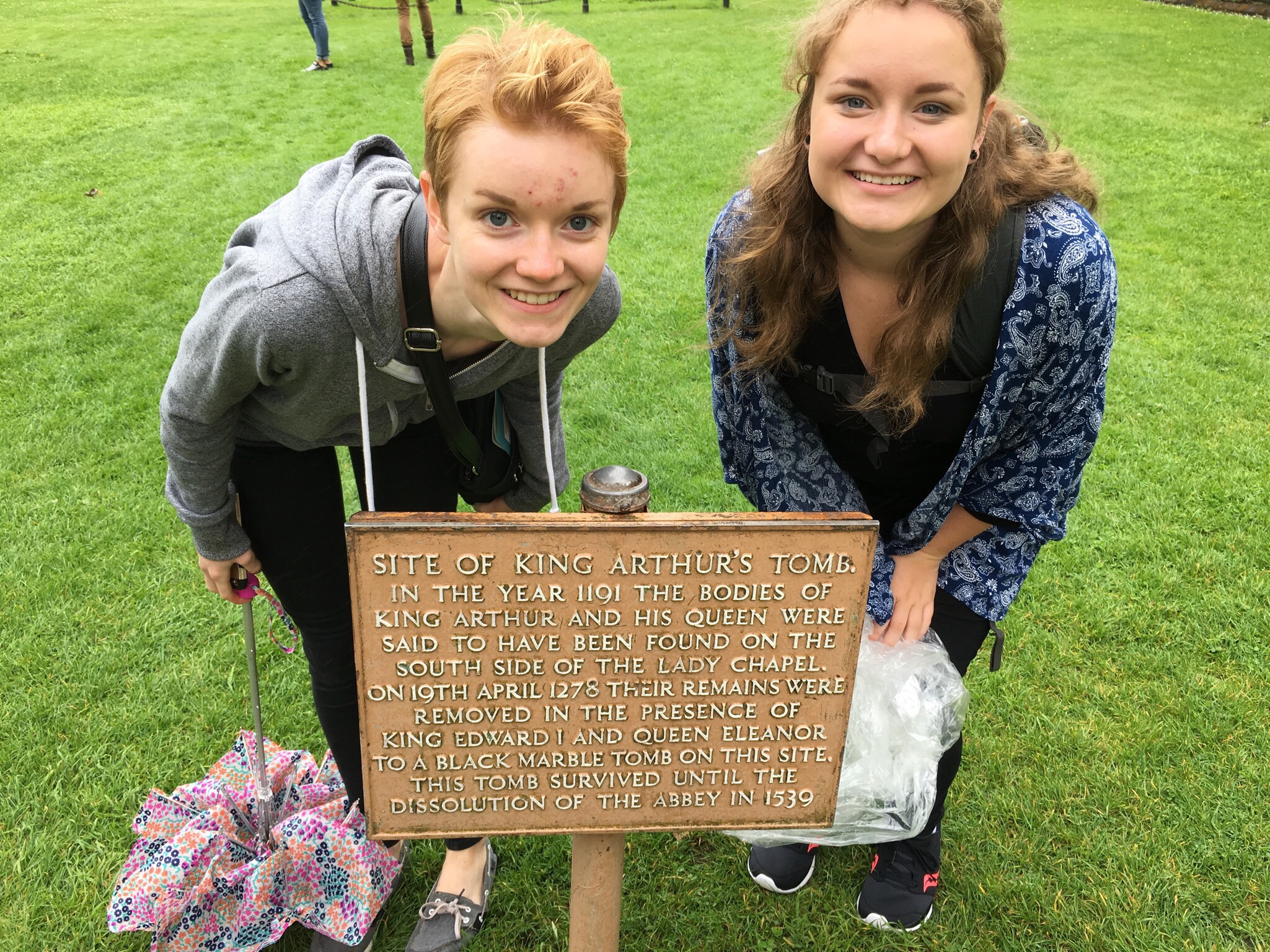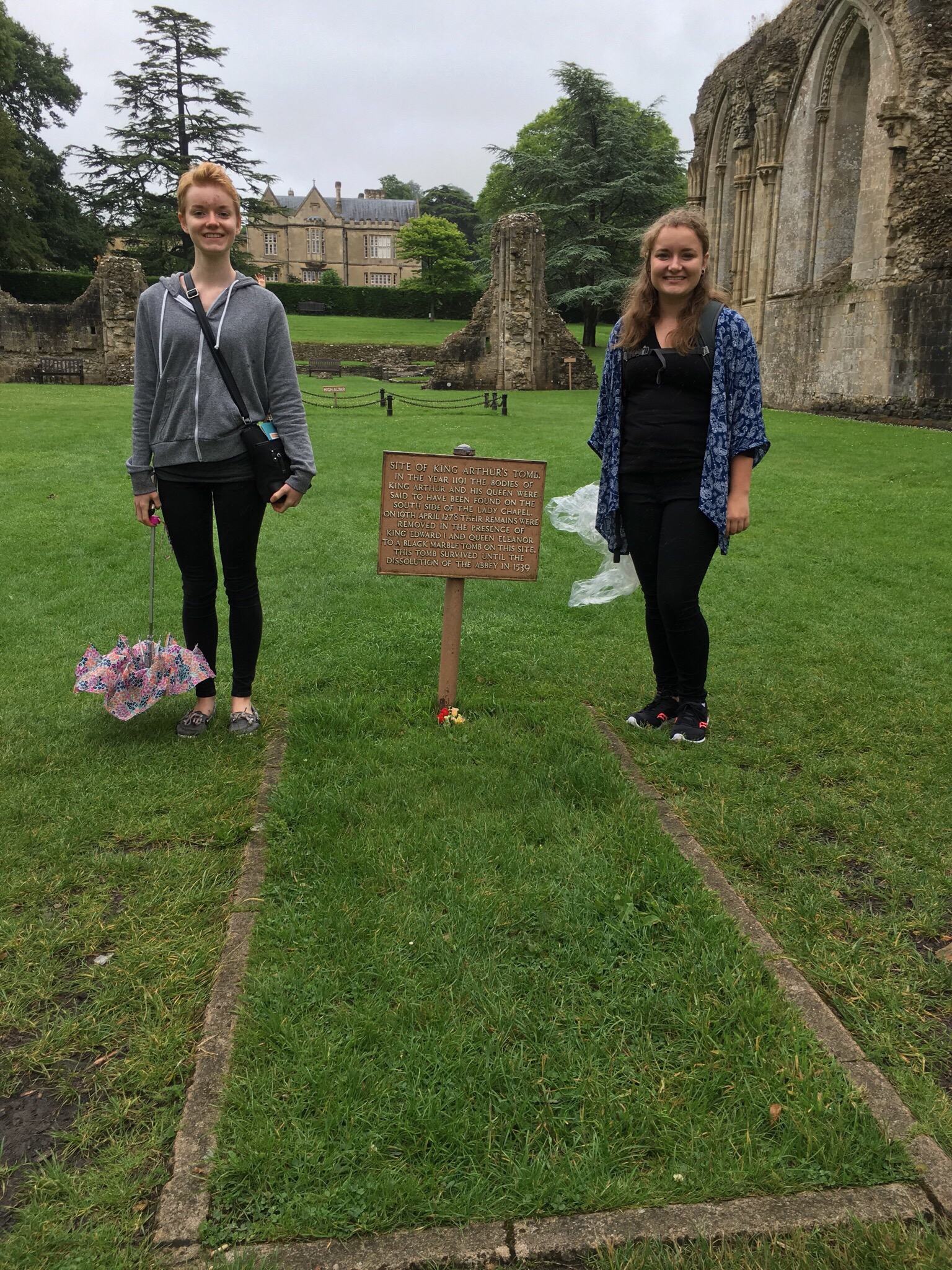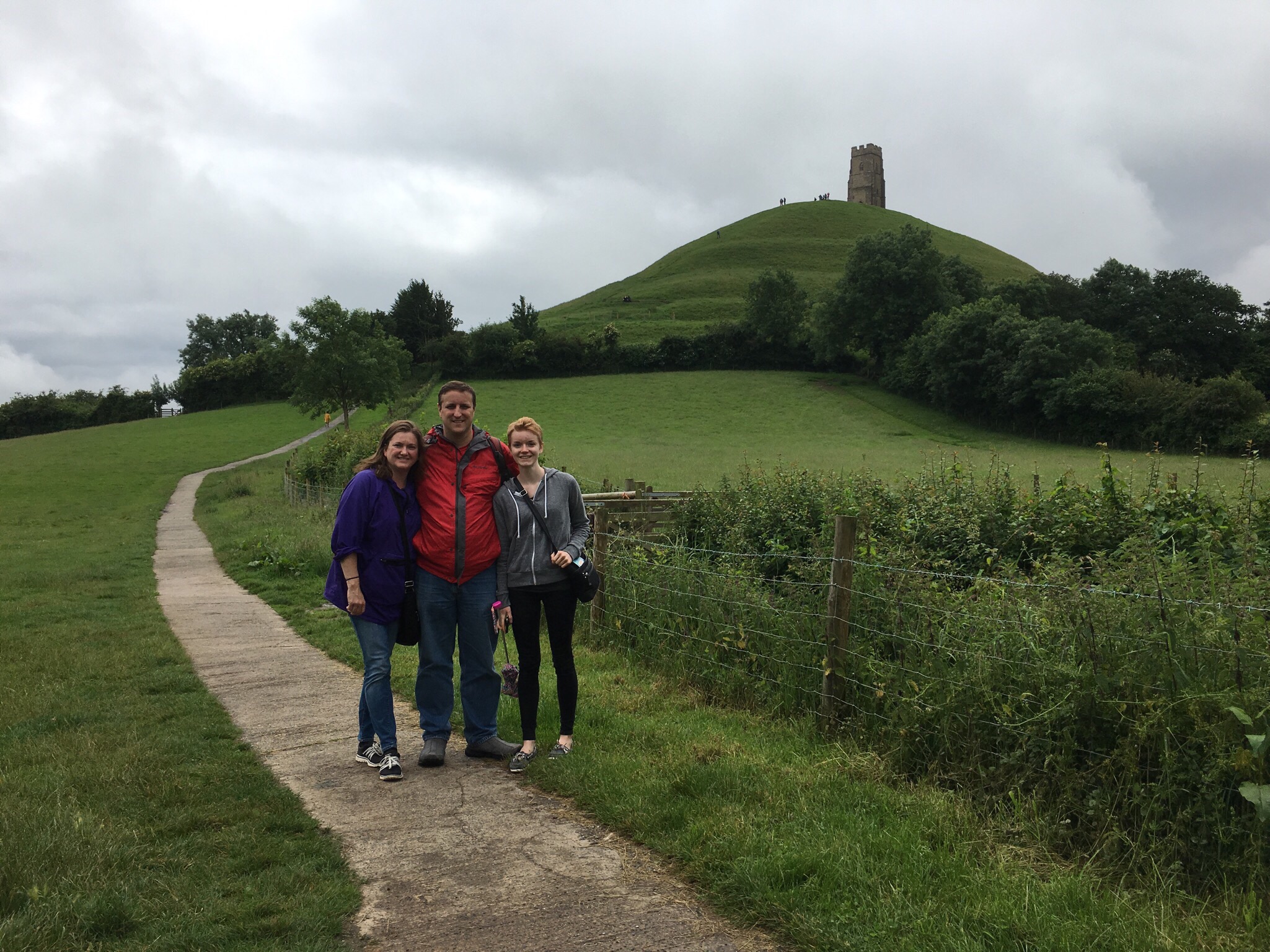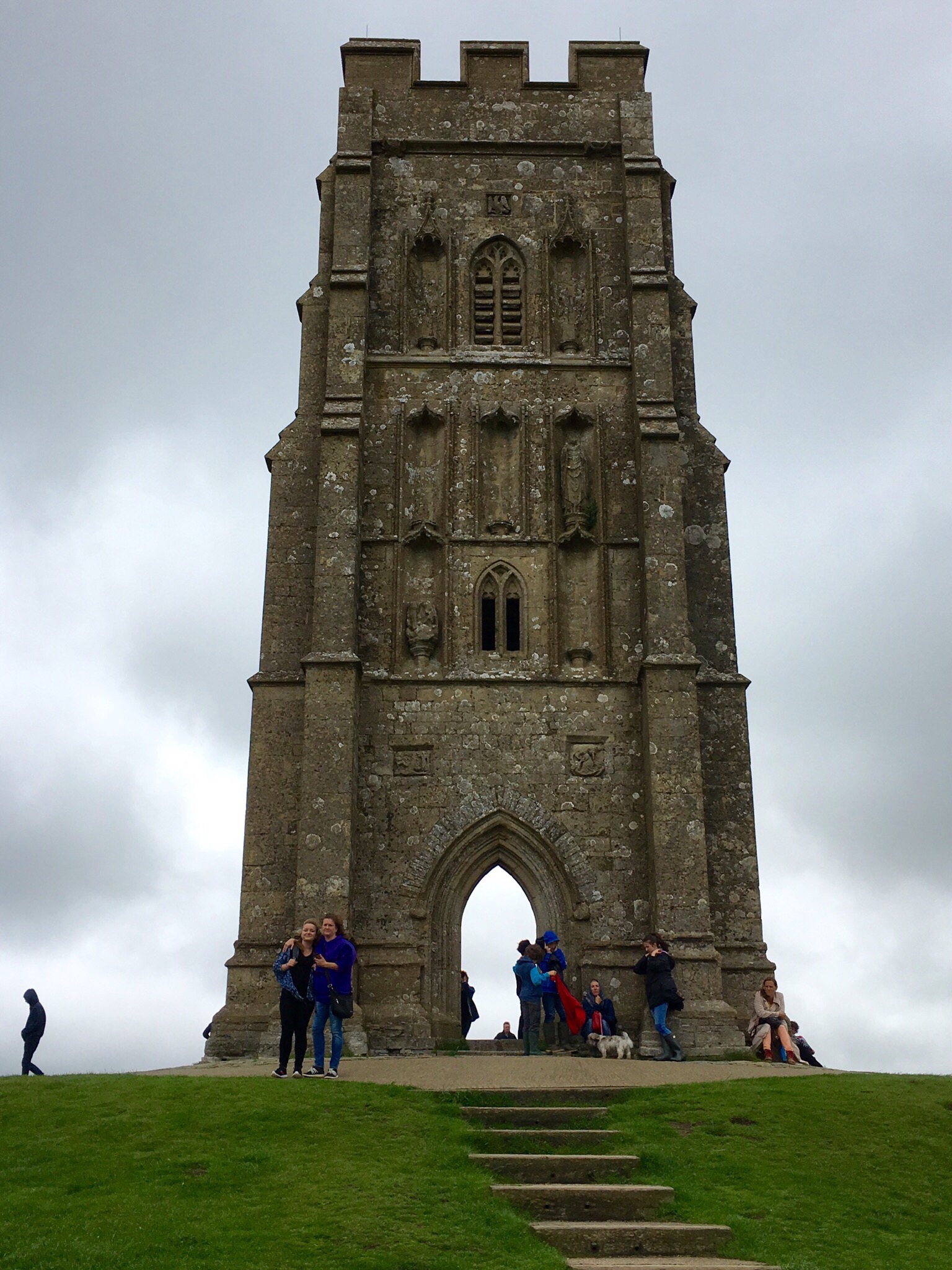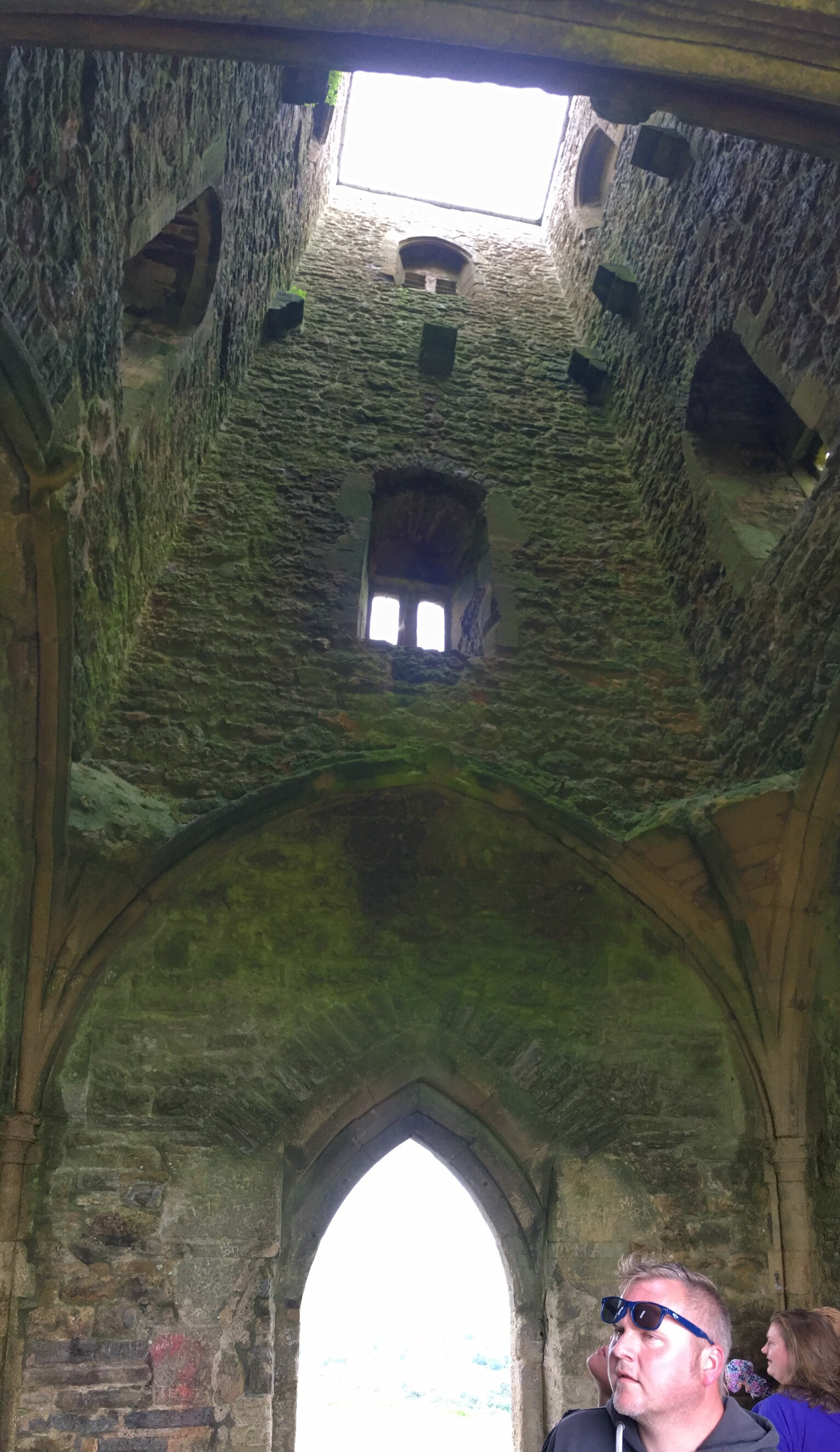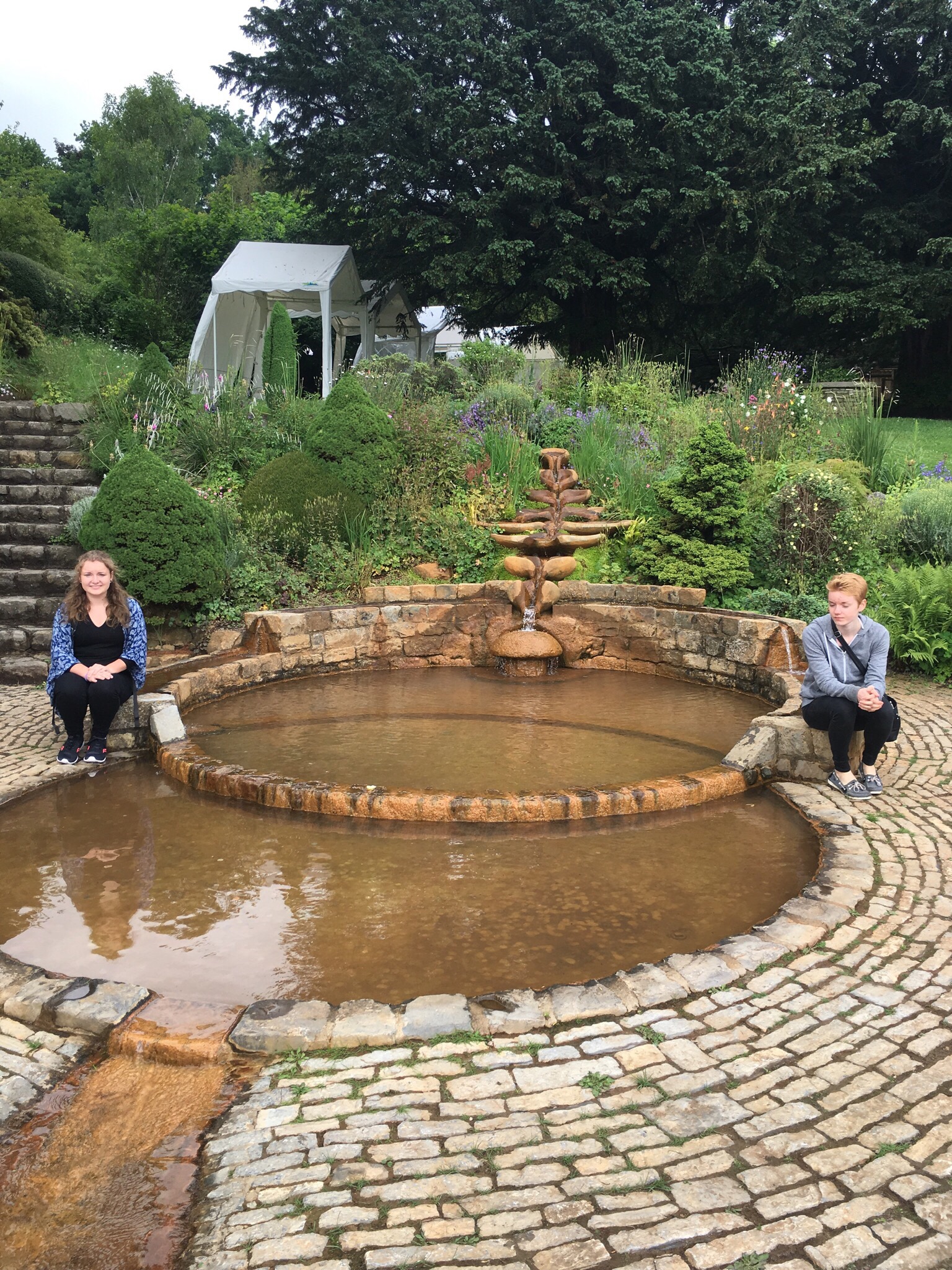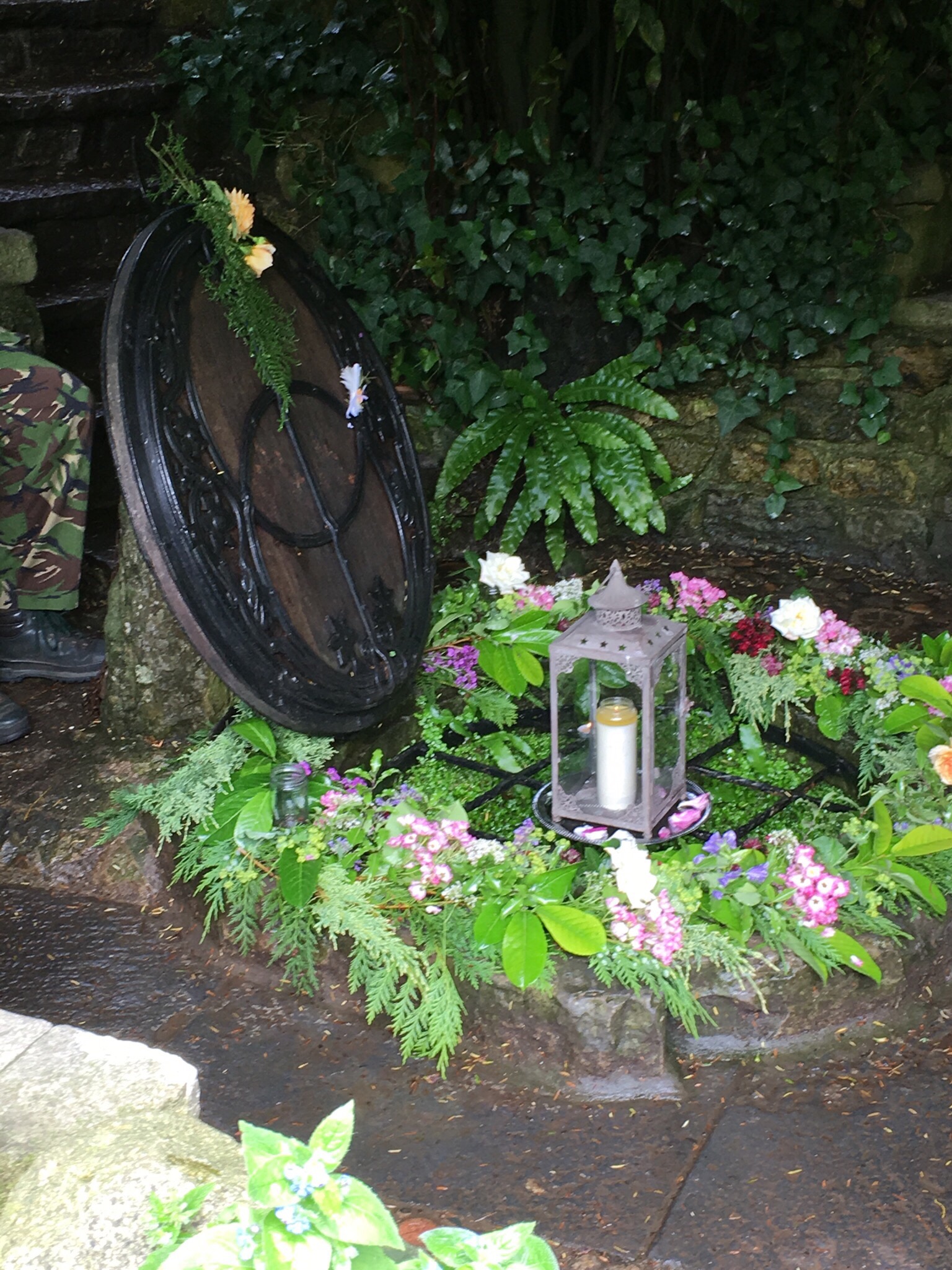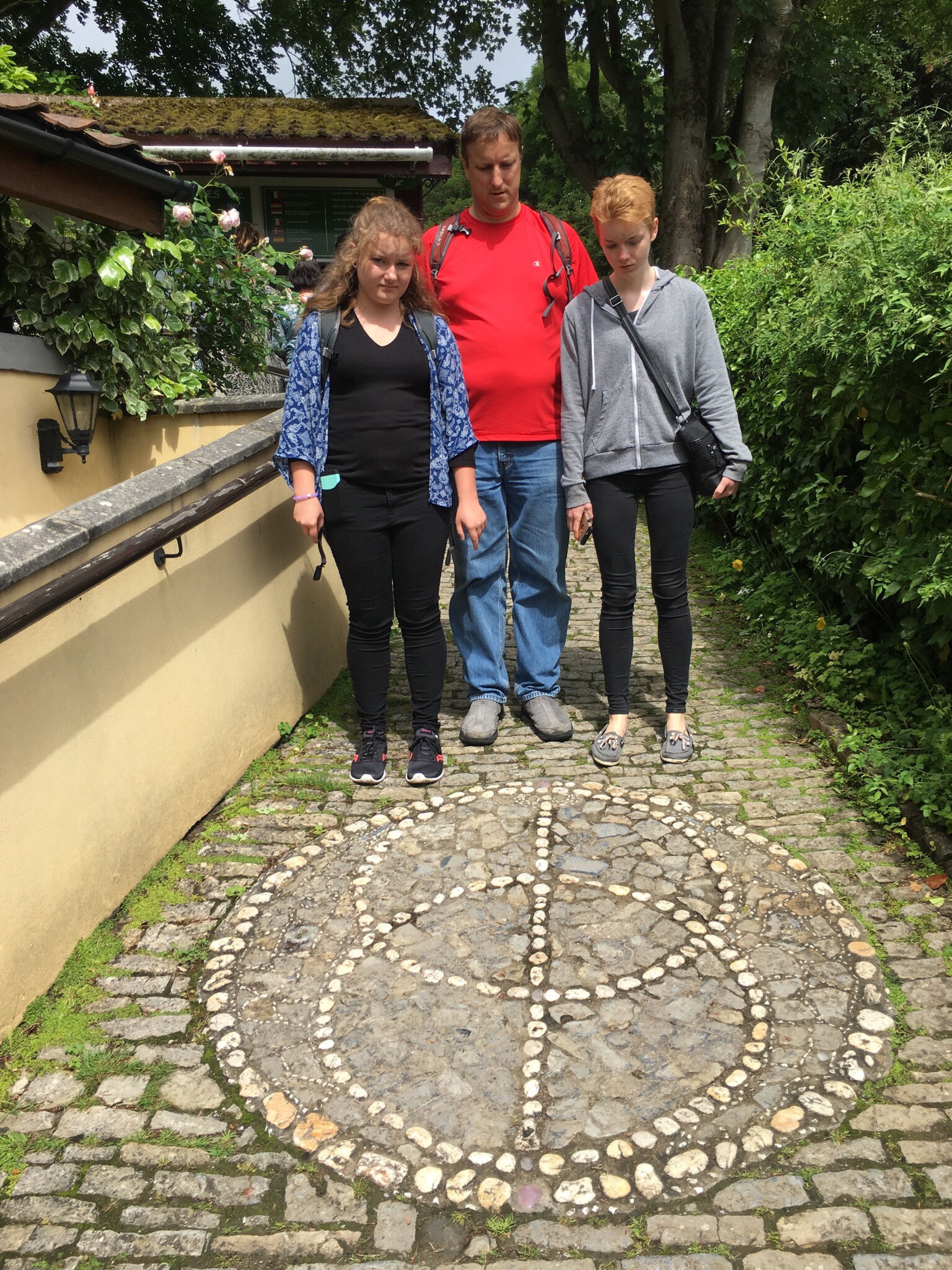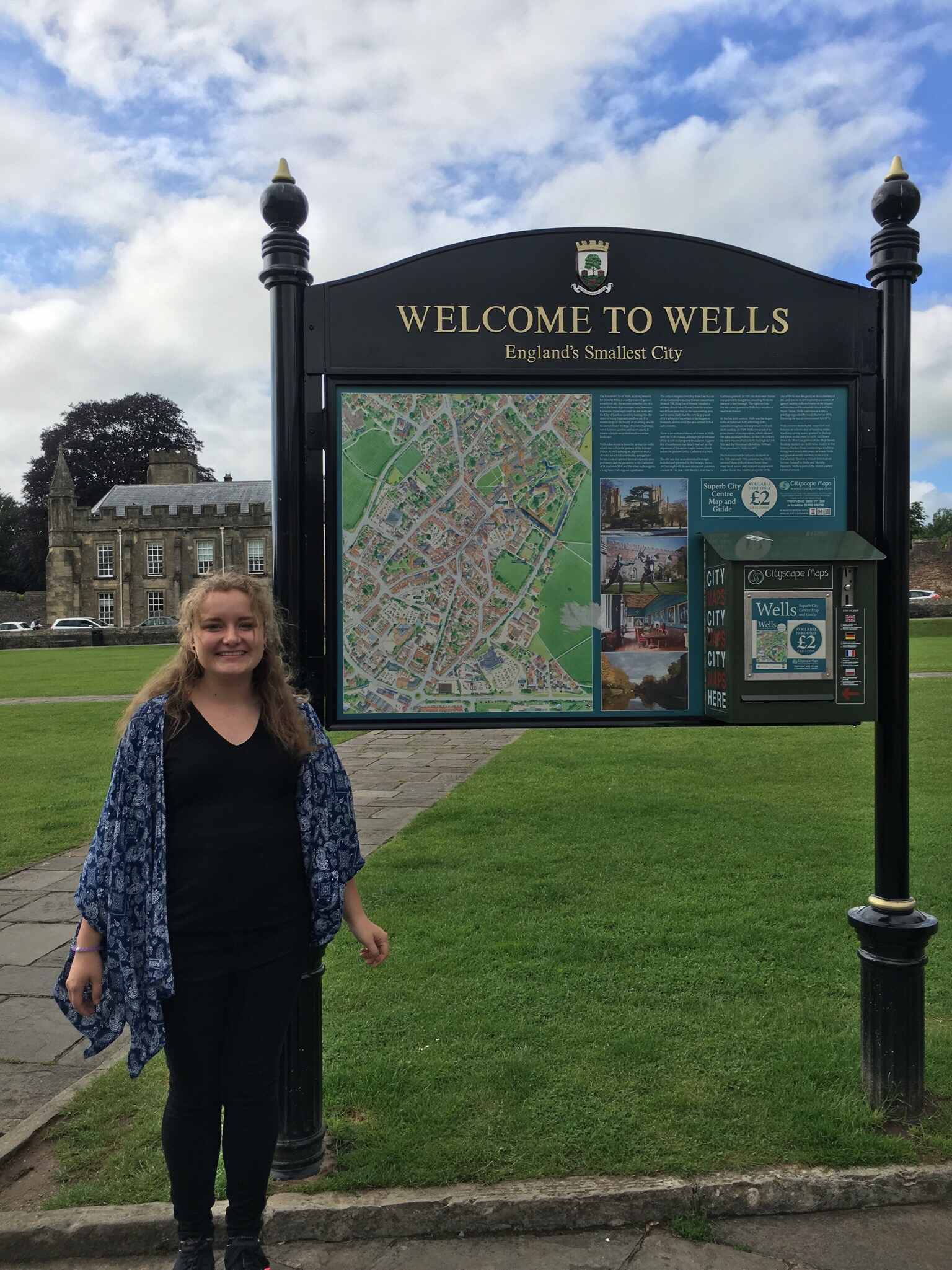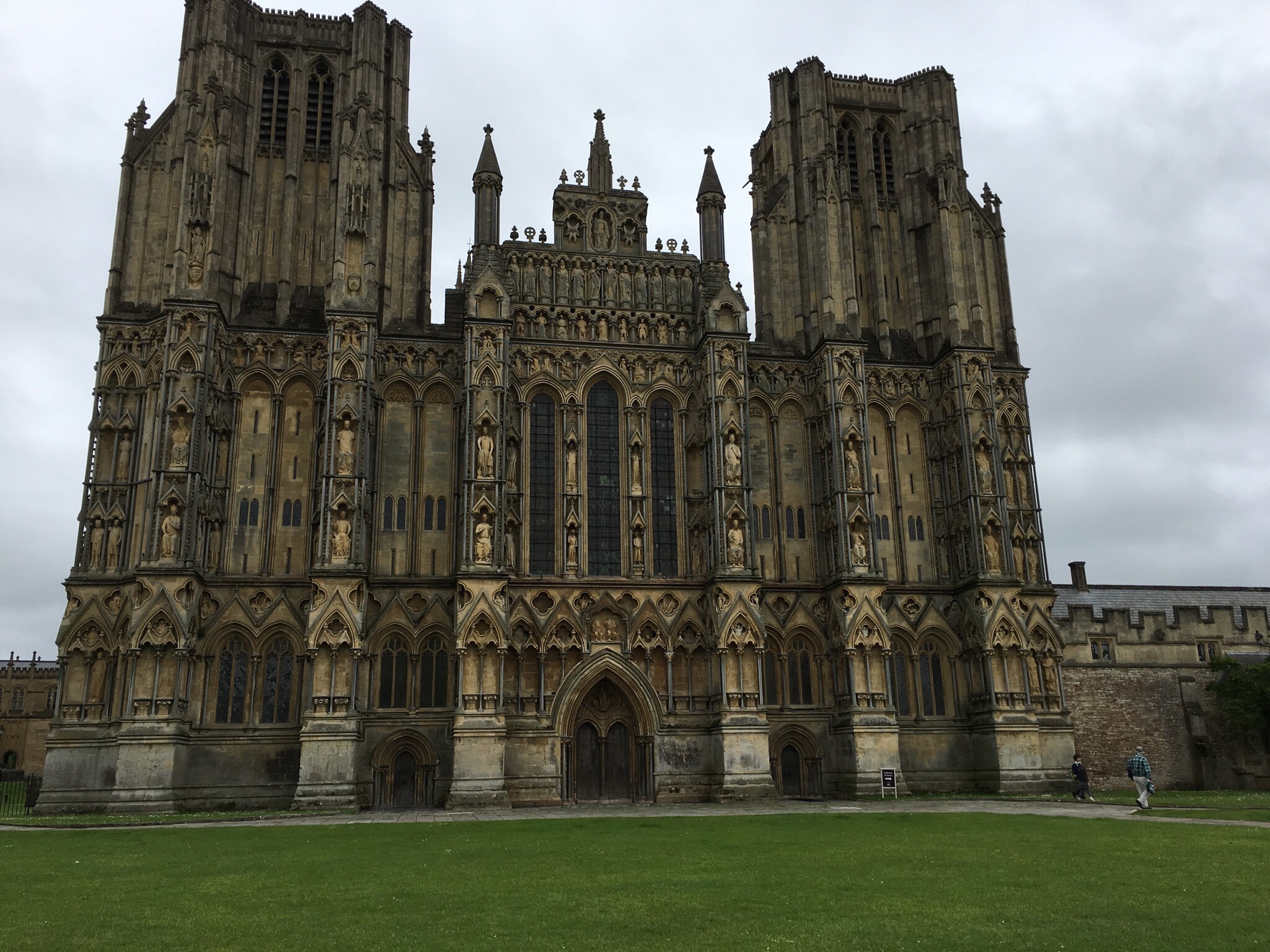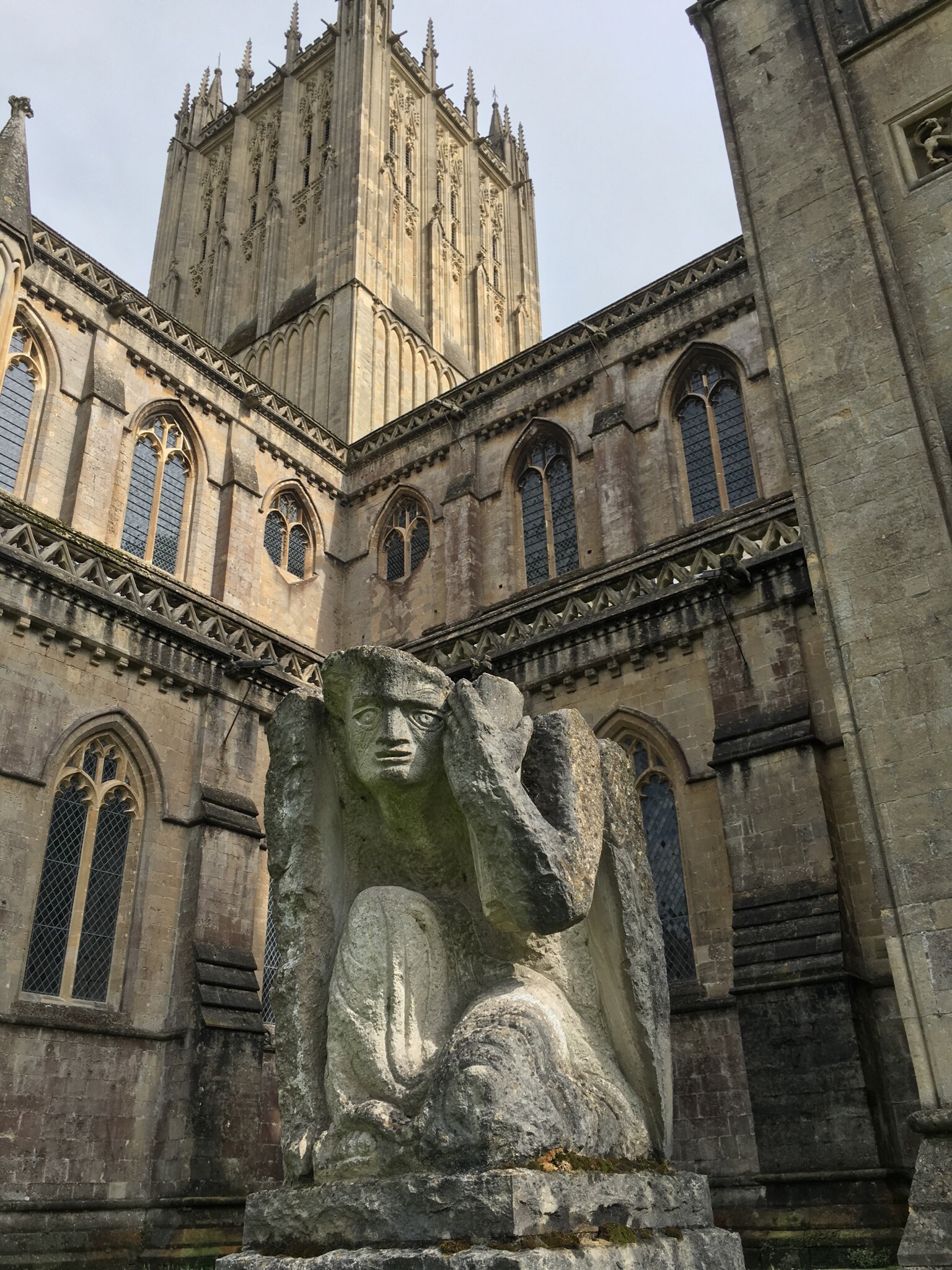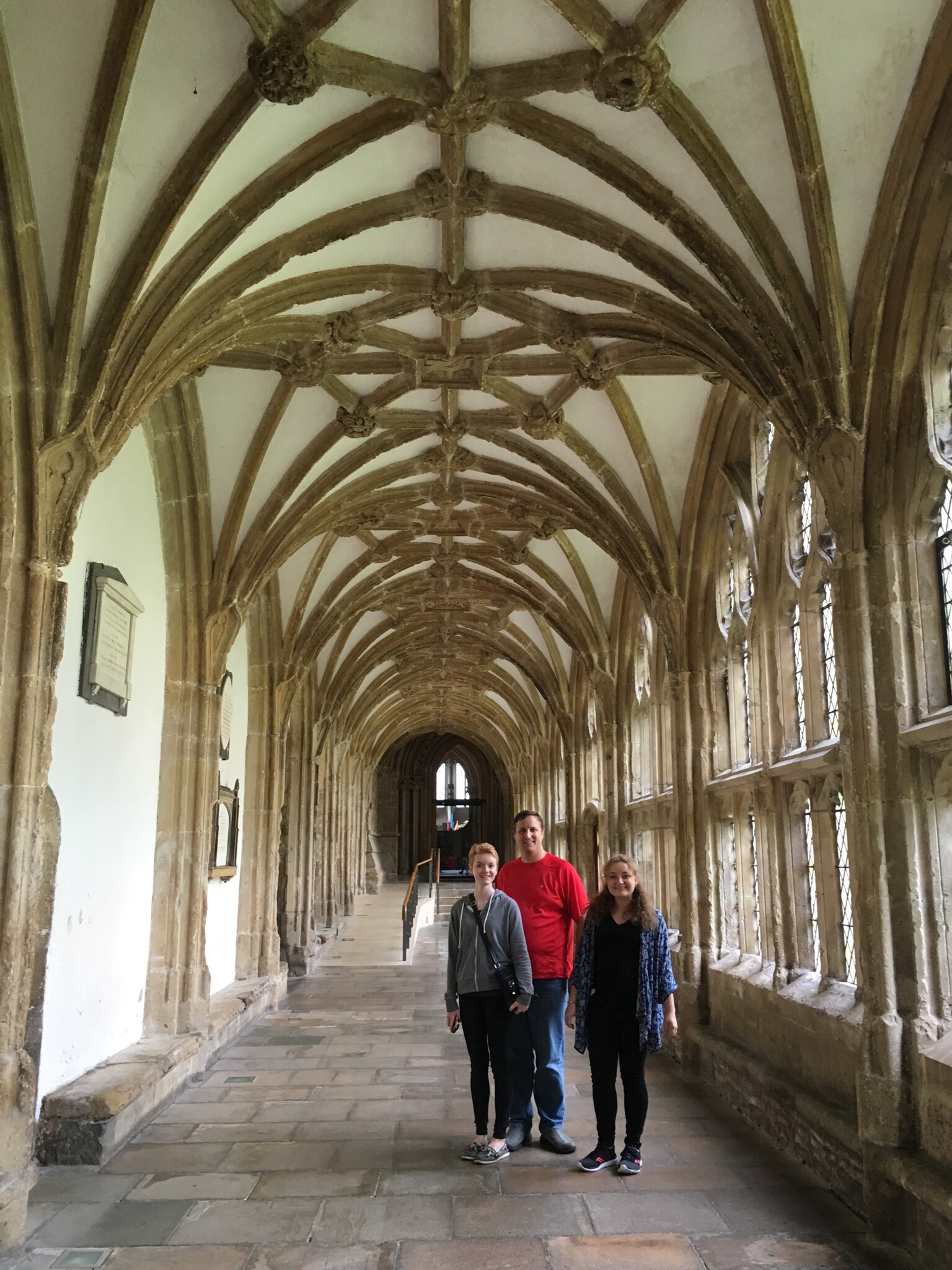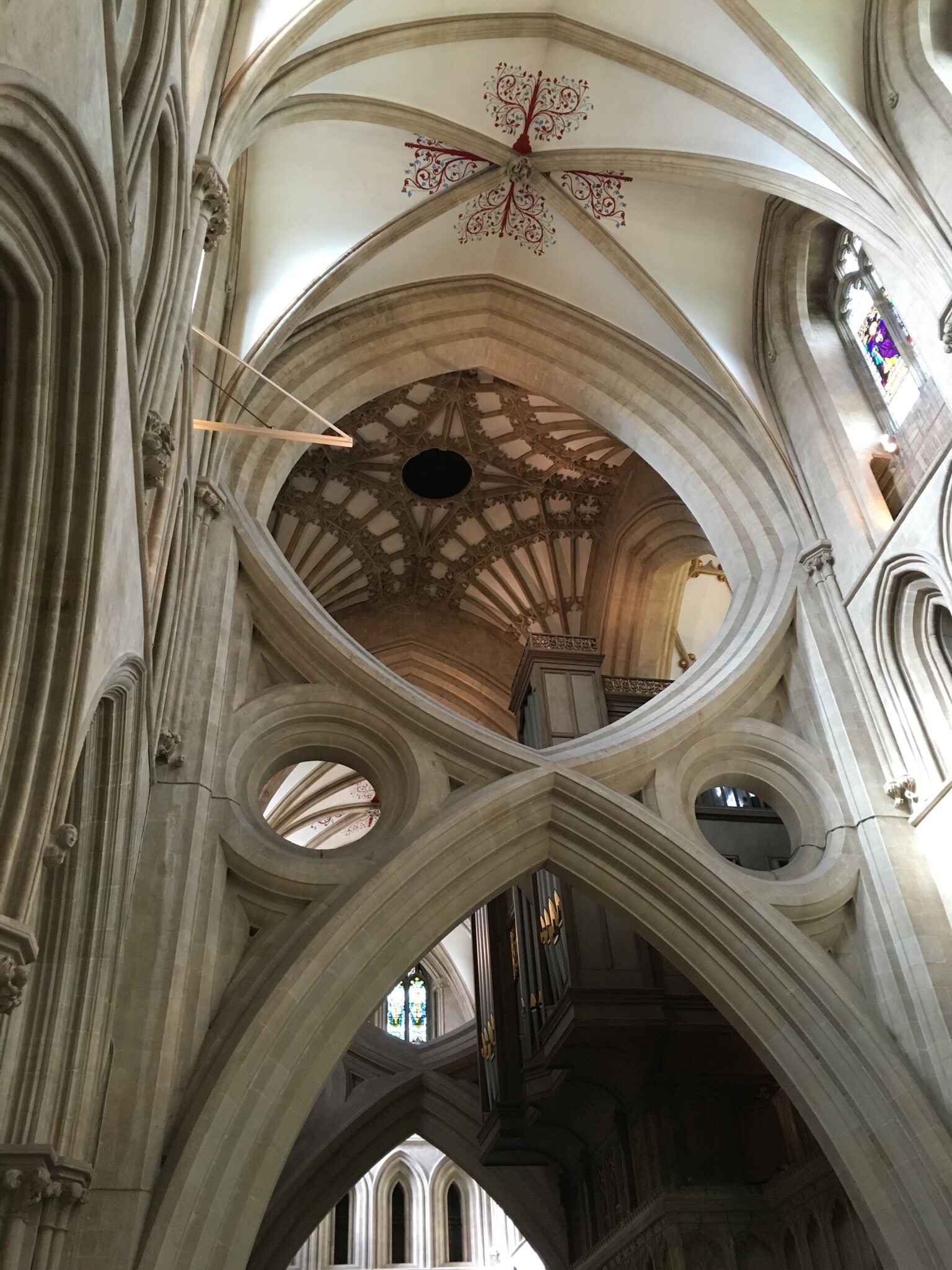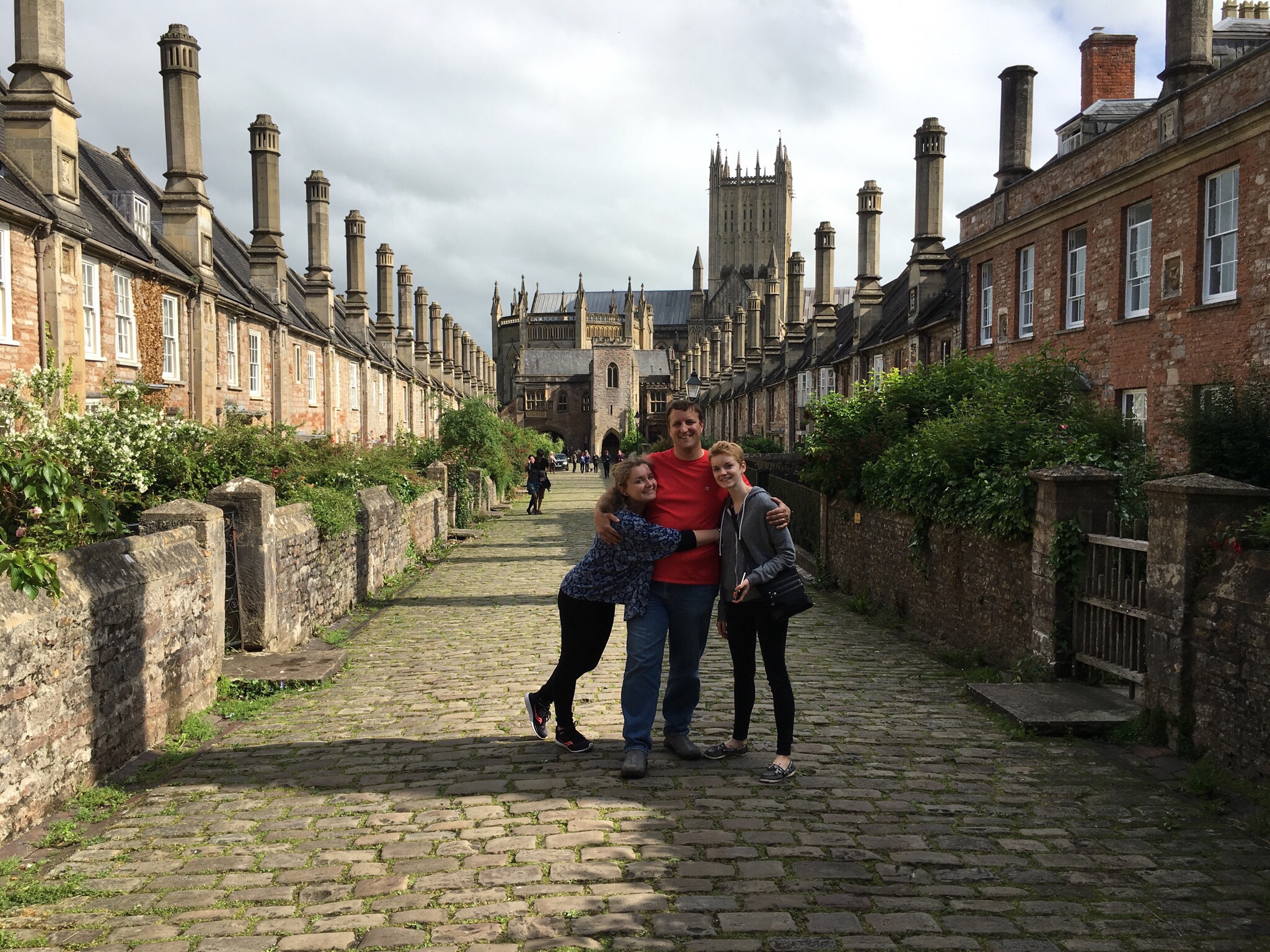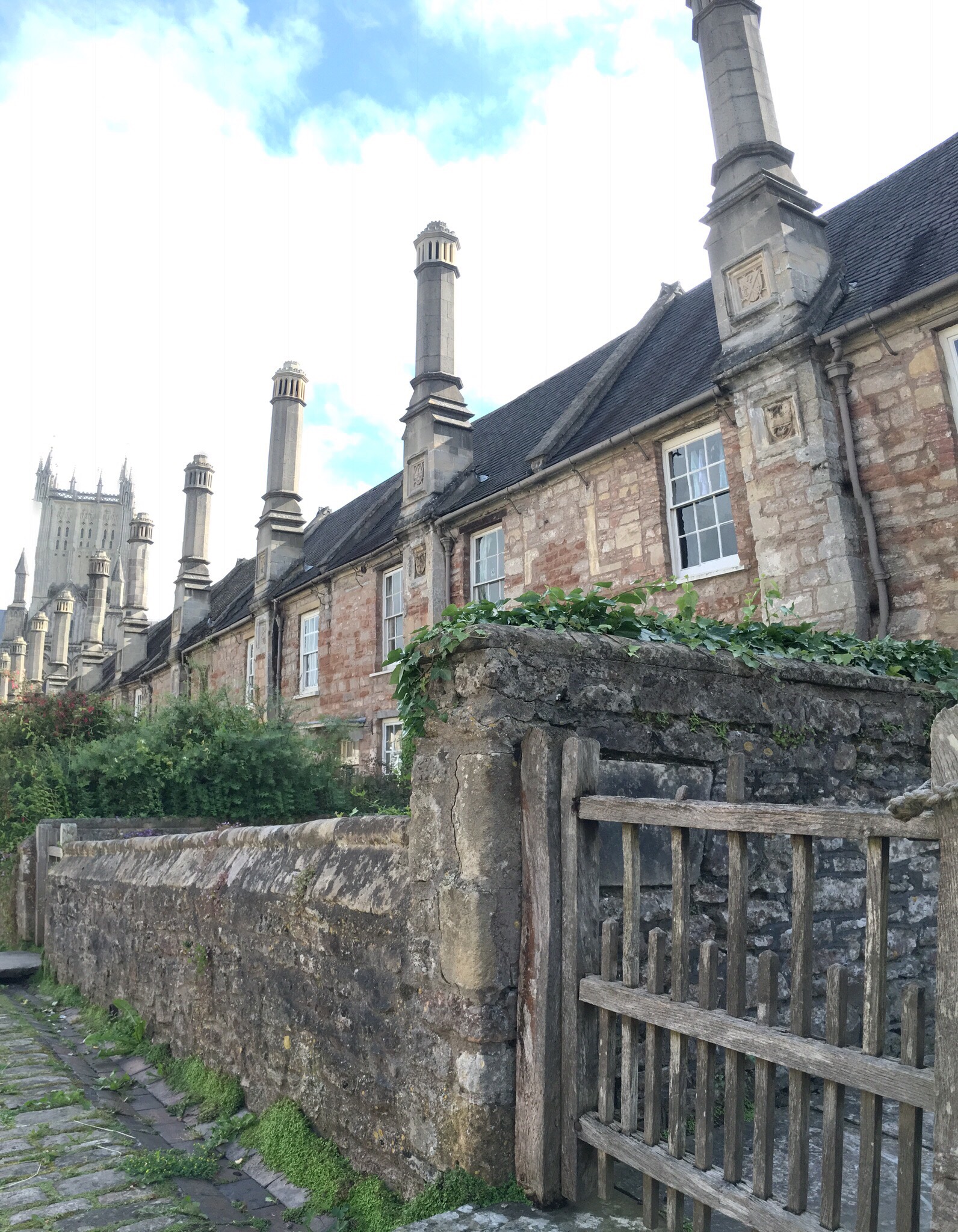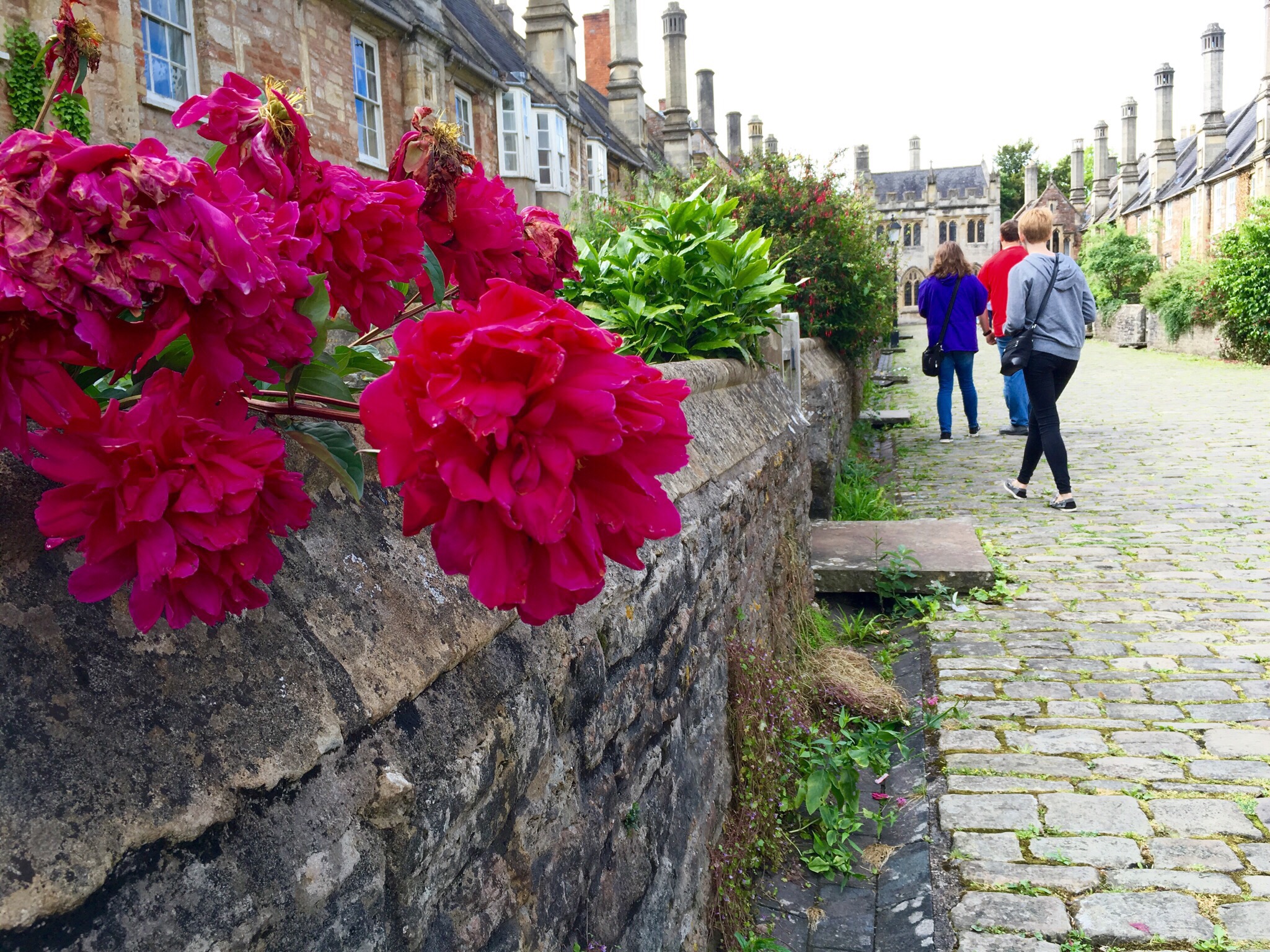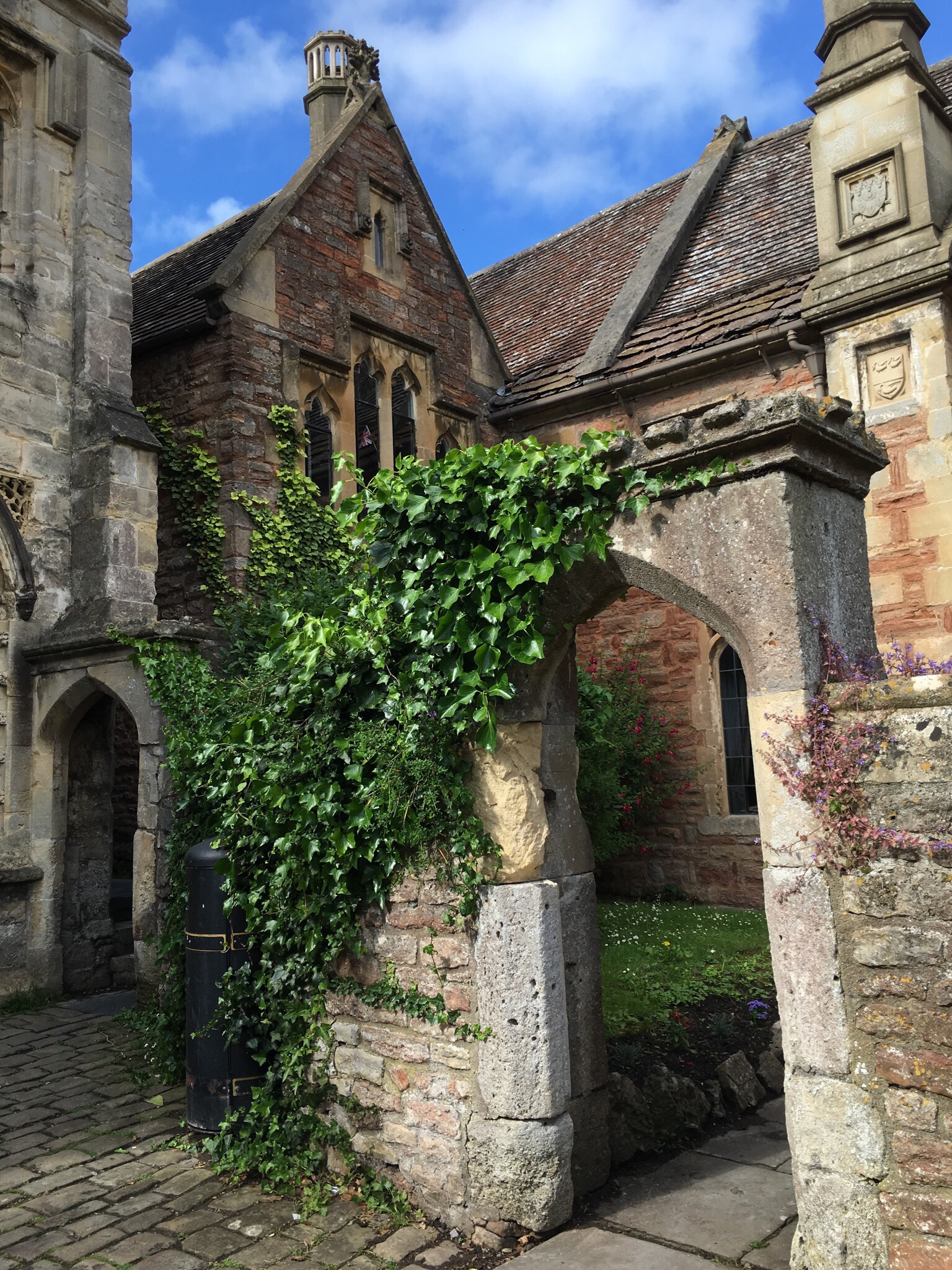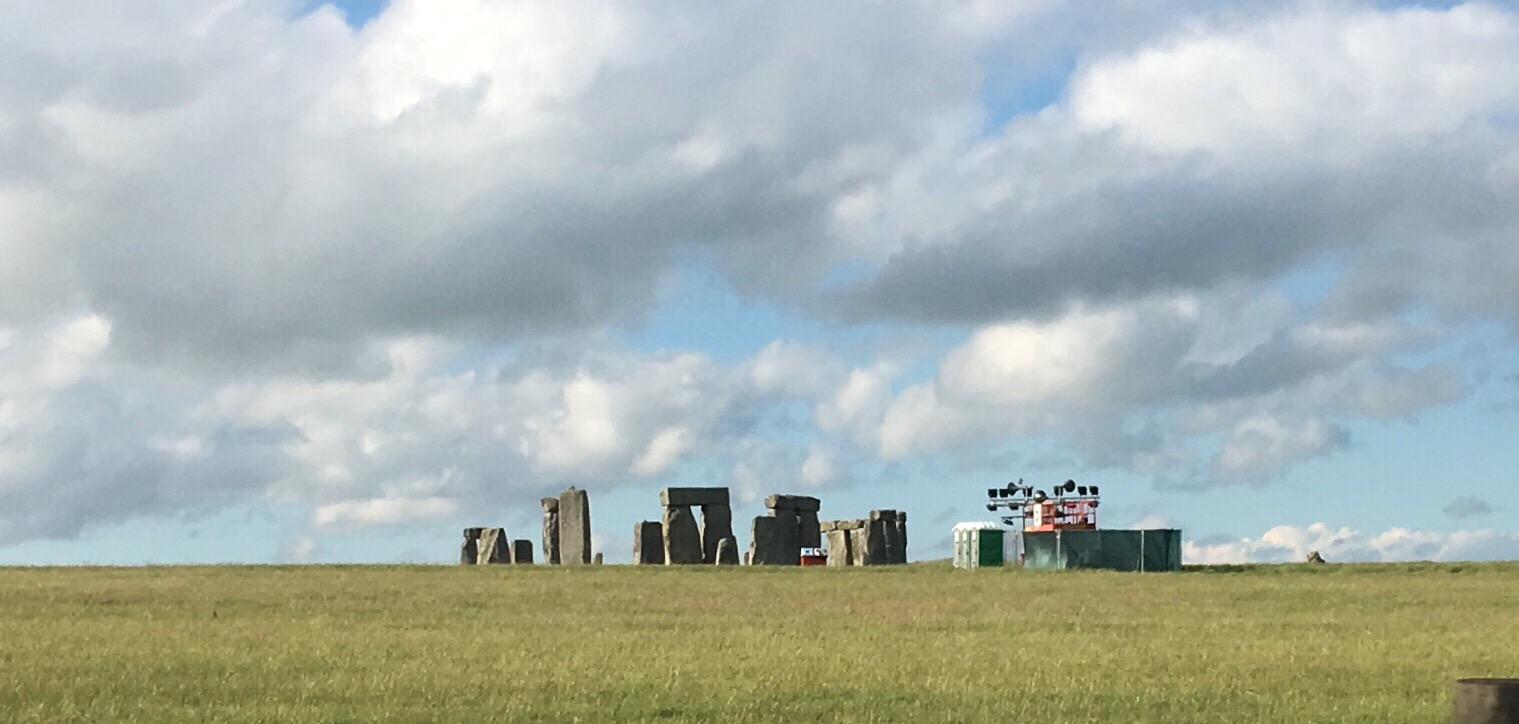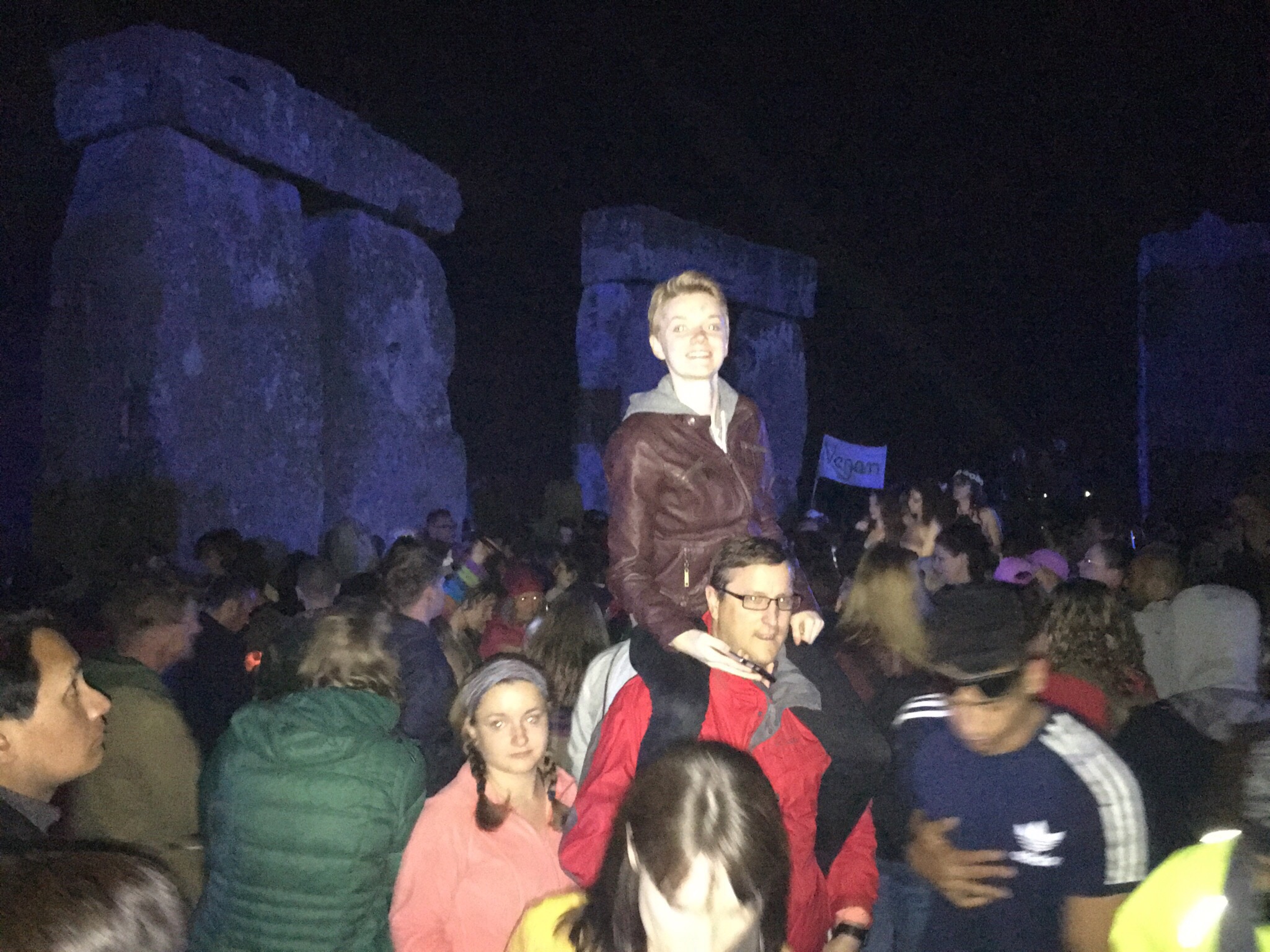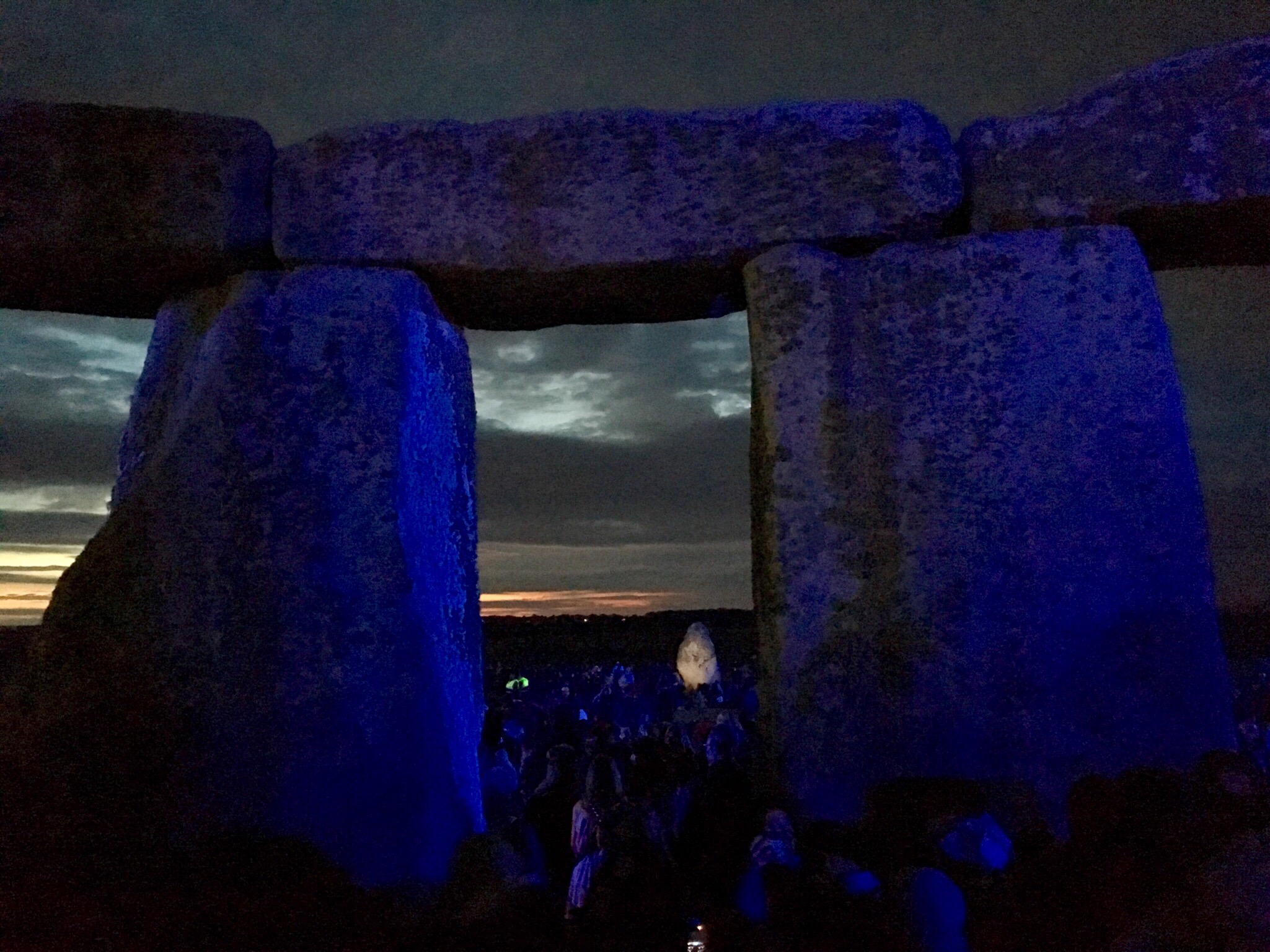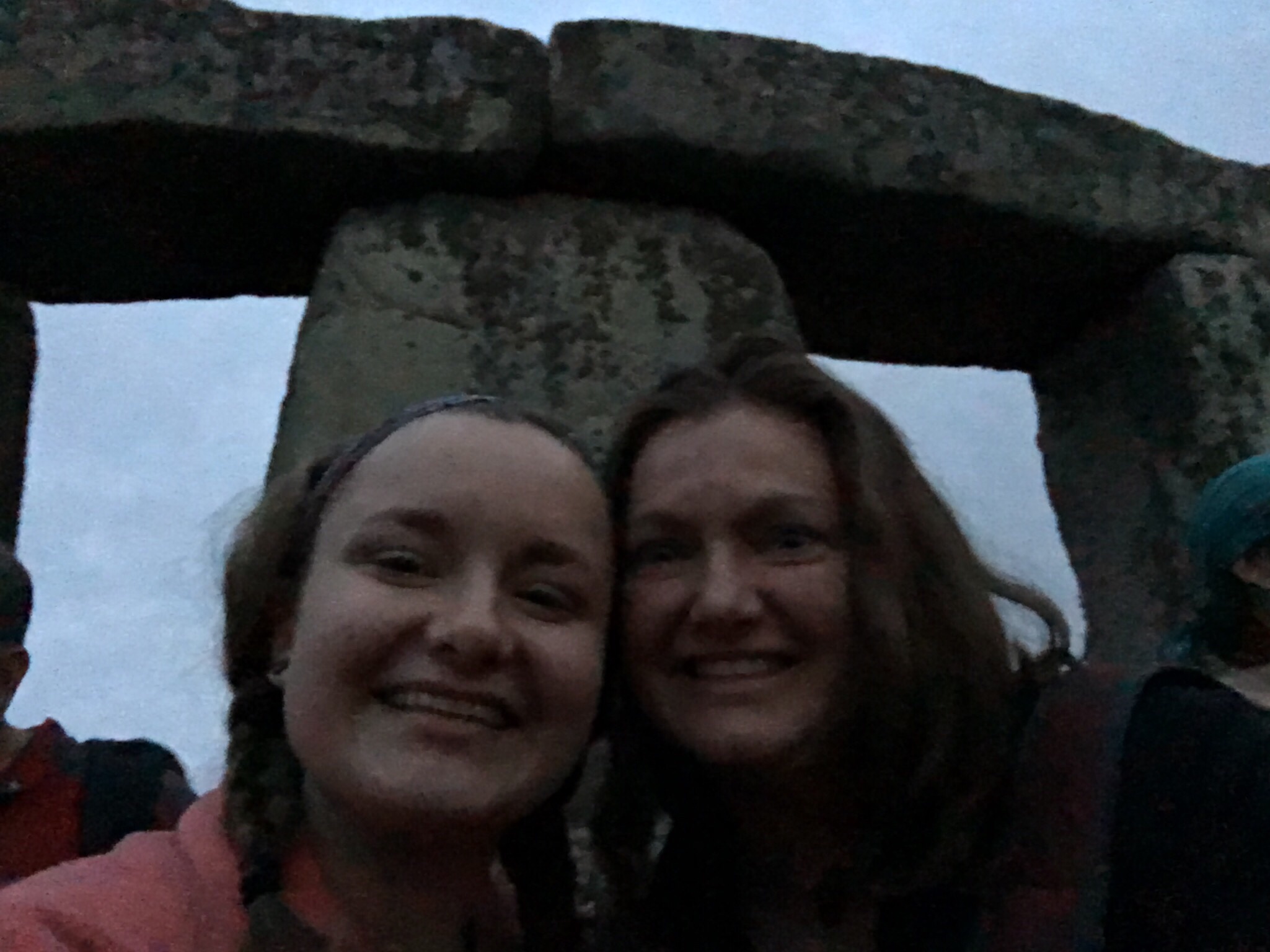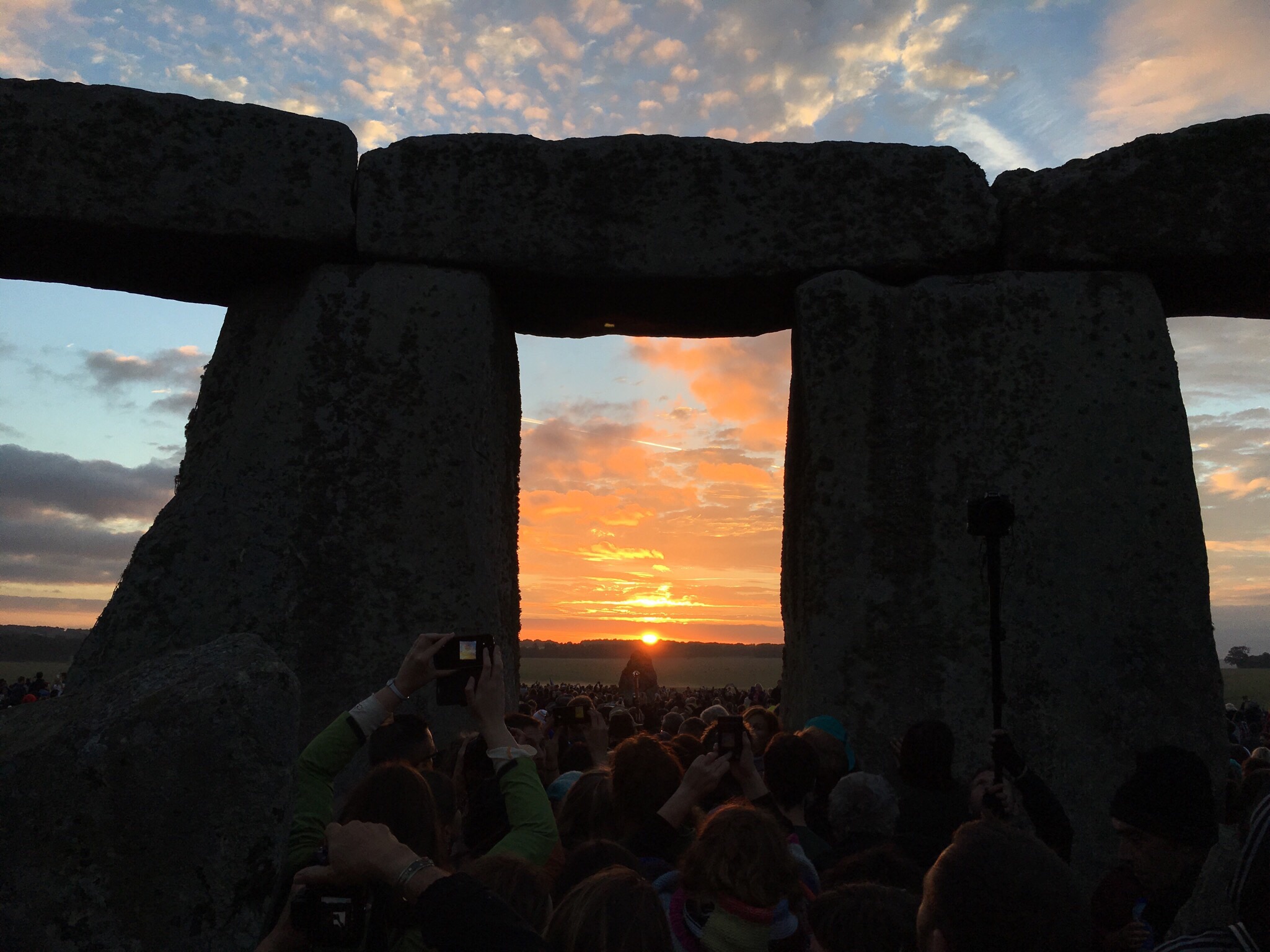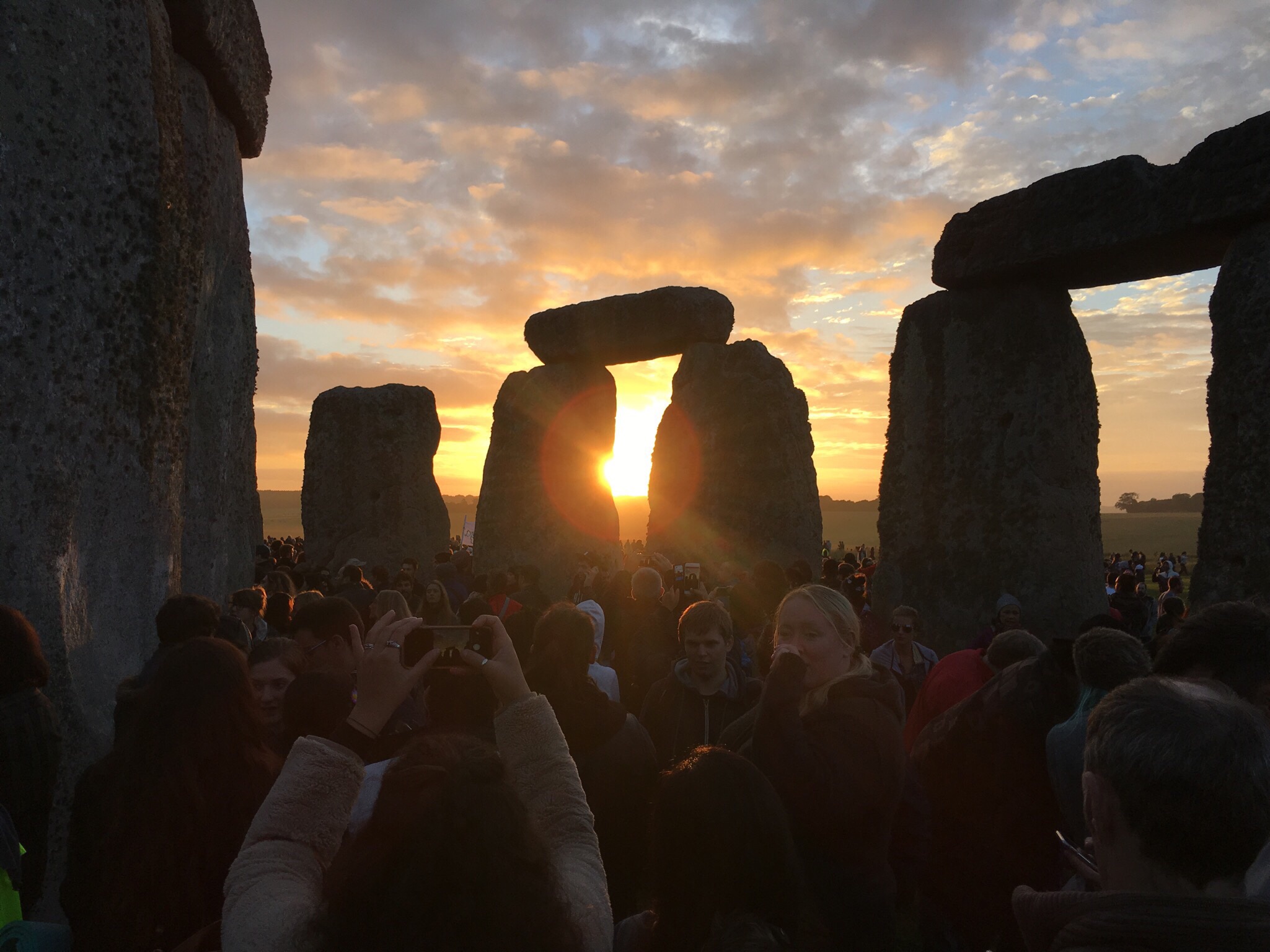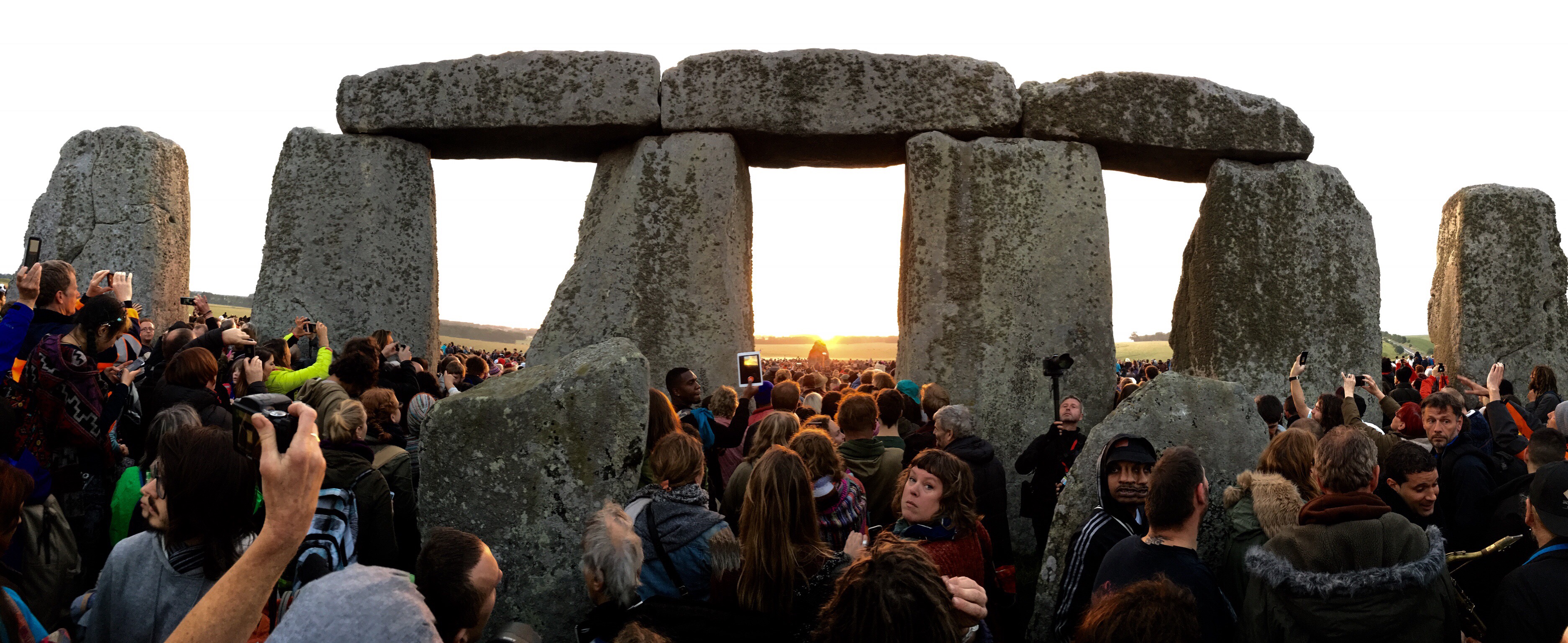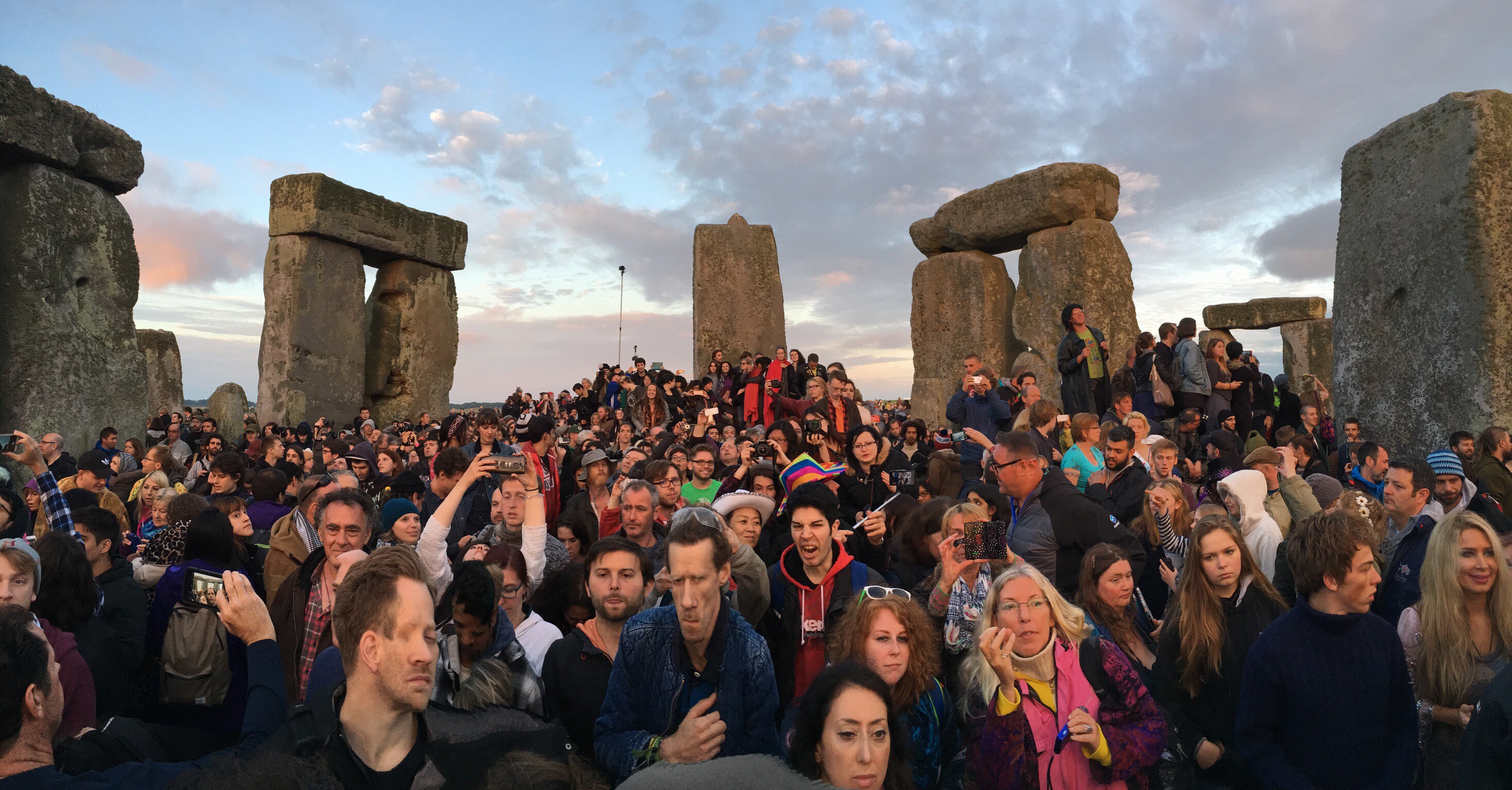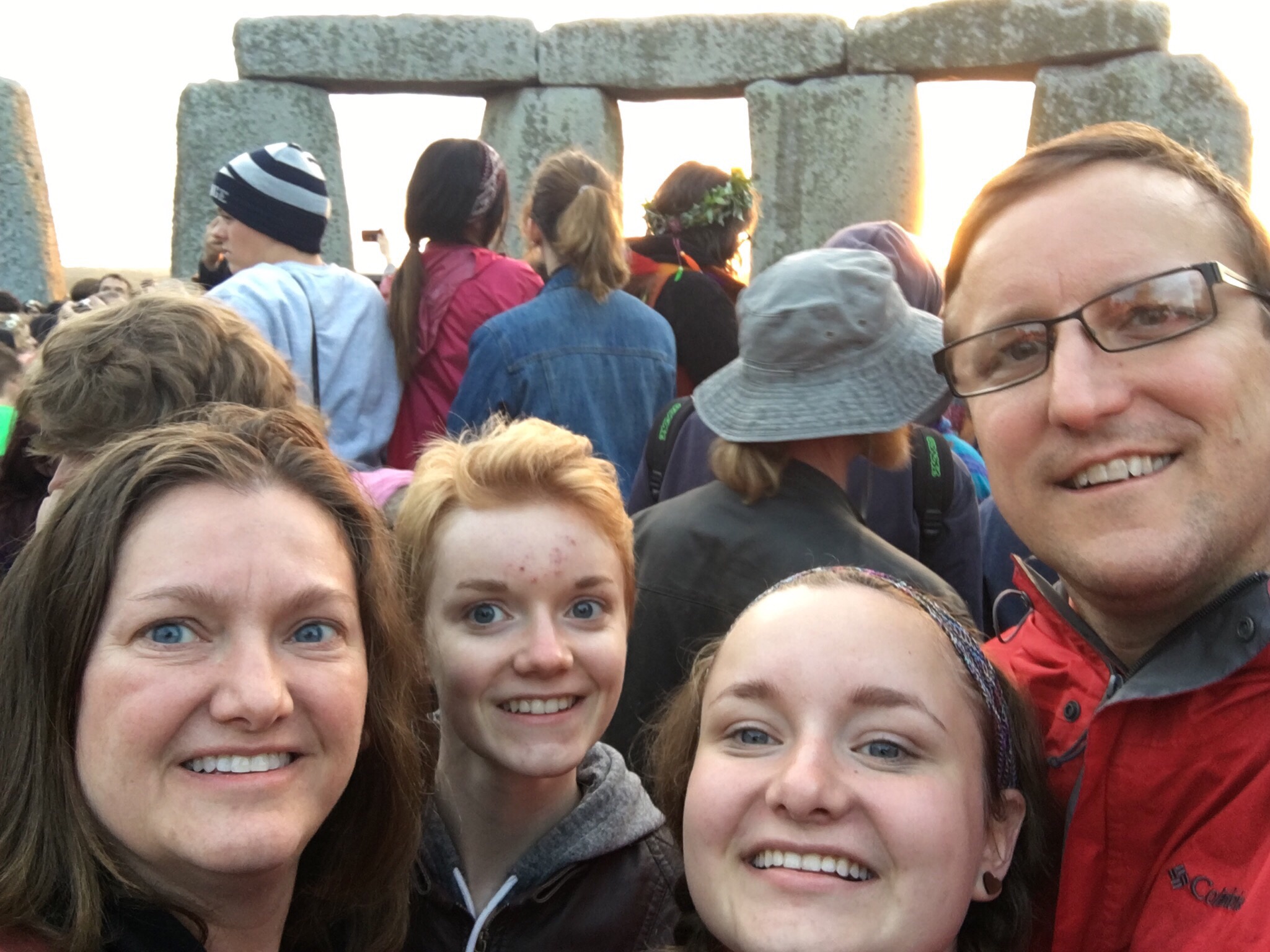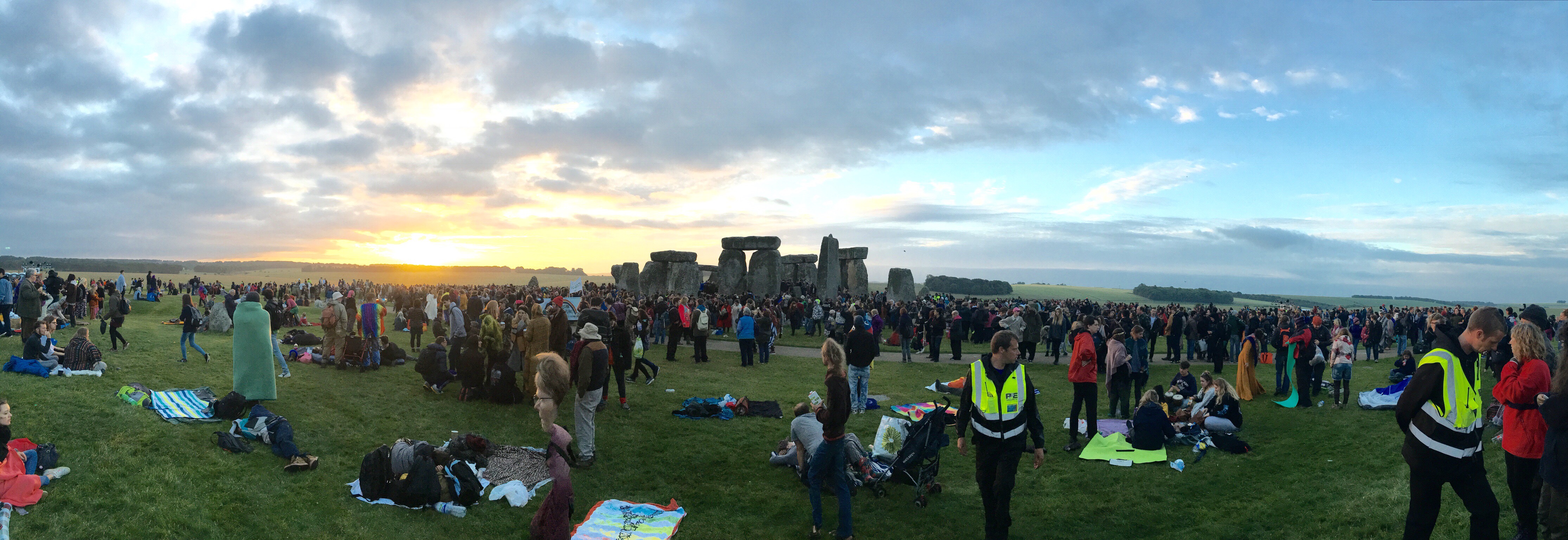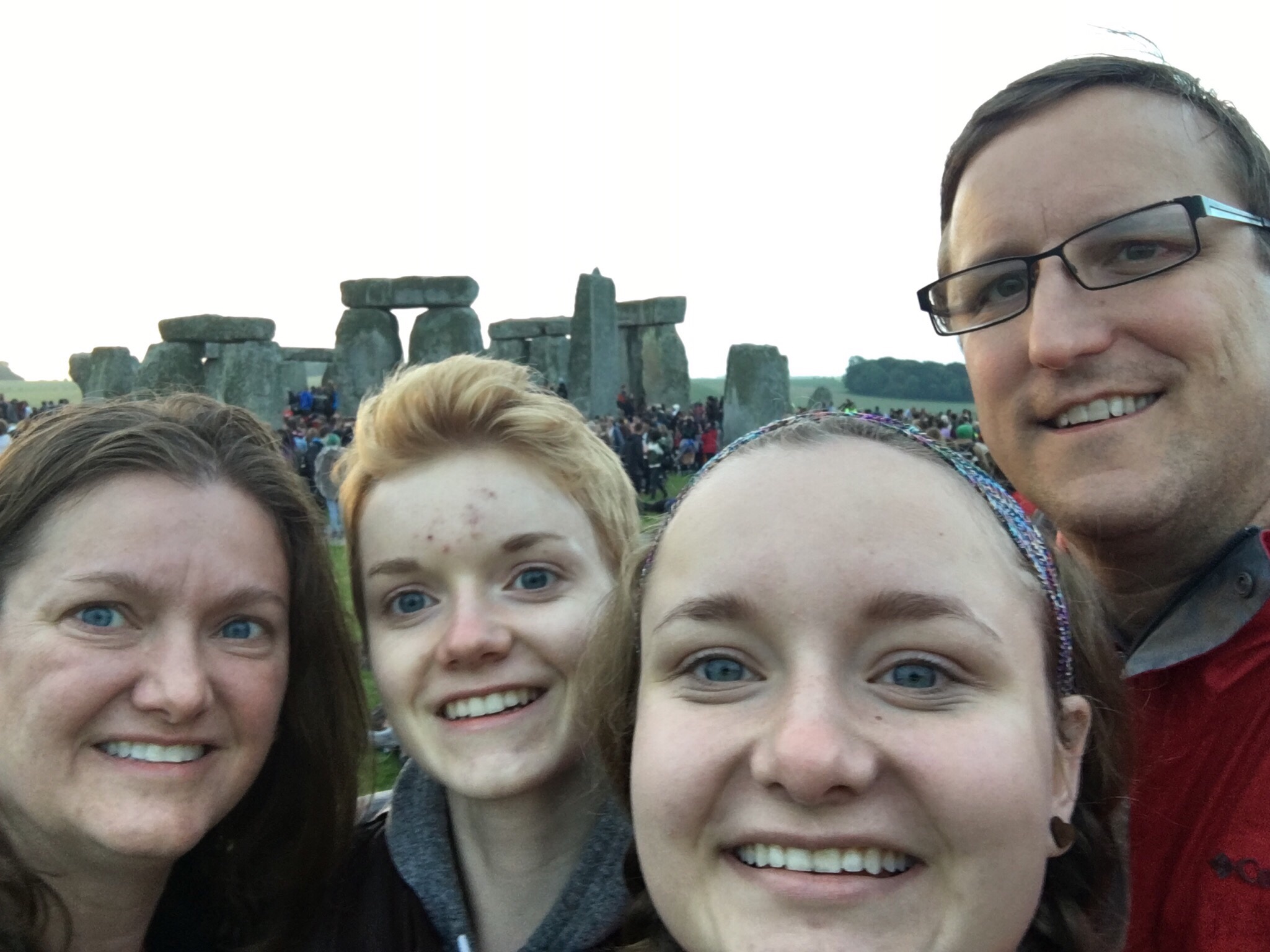Salisbury & Glastonbury
We started the morning at Salisbury Cathedral. The original cathedral was built in 1092 a few miles away at a site called Old Sarum — a religious site used by Romans, Vikings, and various locals until it was irreparably damaged (possibly by a storm) and moved to the town’s current location. I had hoped to see Old Sarum yesterday. However, we were tired and driving was scary, so we had to take baby steps in getting around. We had to settle with the current cathedral only, but it was hardly settling. Salisbury Cathedral is absolutely amazing. It was started in 1228 and built in only 38 years. Its spire is Britain’s tallest.
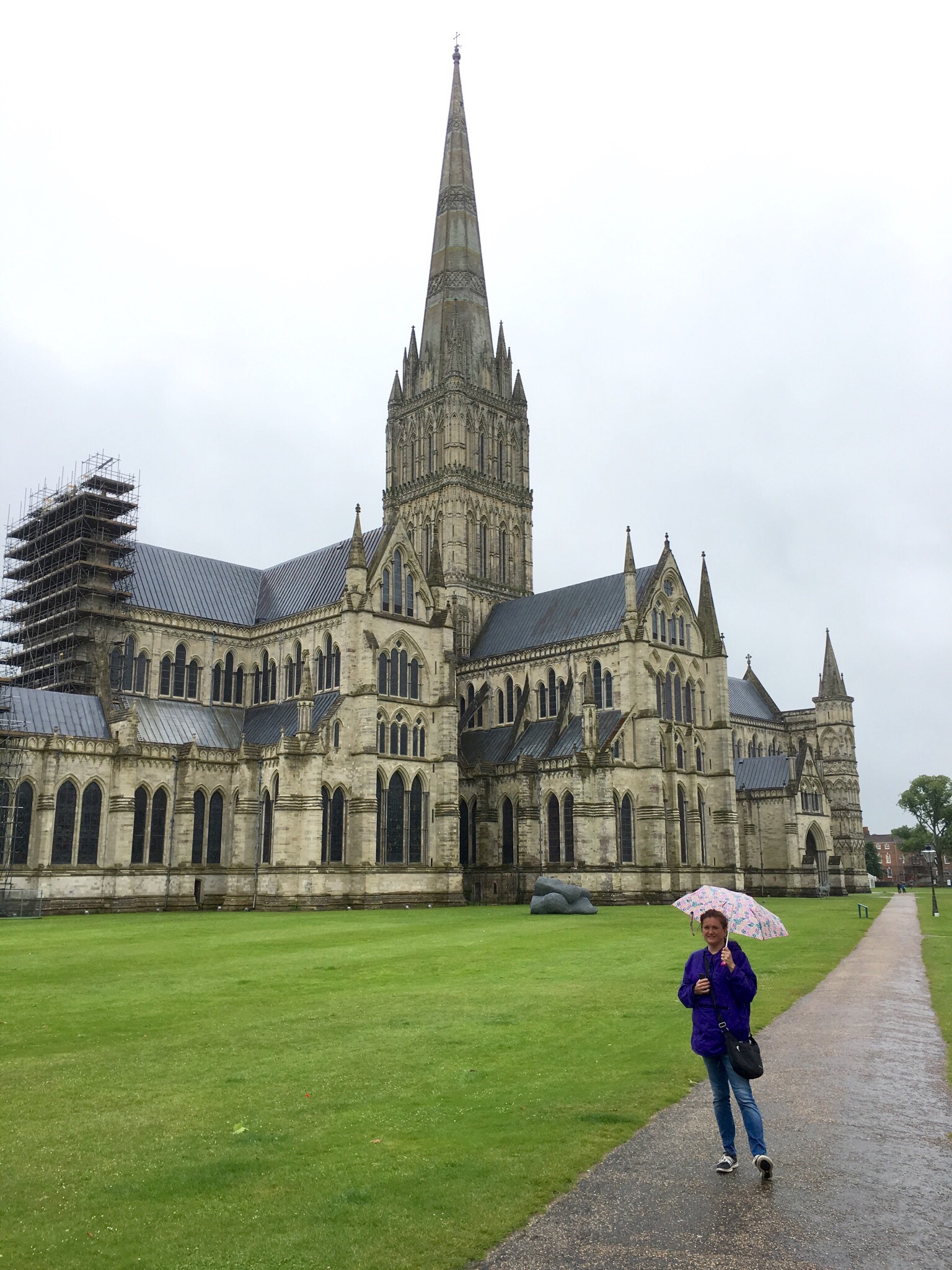 While we were visiting, an artist, Sophie Ryder, had many sculptures decorating the grounds. They were an interesting match for the grandeur of the grounds and cathedral. We would be wandering around the religious and thoughtful architecture and suddenly be staring at Midsummer-Night’s-Dream-Alice-in-Wonderland donkey/rabbit/human hybrids.
While we were visiting, an artist, Sophie Ryder, had many sculptures decorating the grounds. They were an interesting match for the grandeur of the grounds and cathedral. We would be wandering around the religious and thoughtful architecture and suddenly be staring at Midsummer-Night’s-Dream-Alice-in-Wonderland donkey/rabbit/human hybrids.
The Cathedral’s interior:
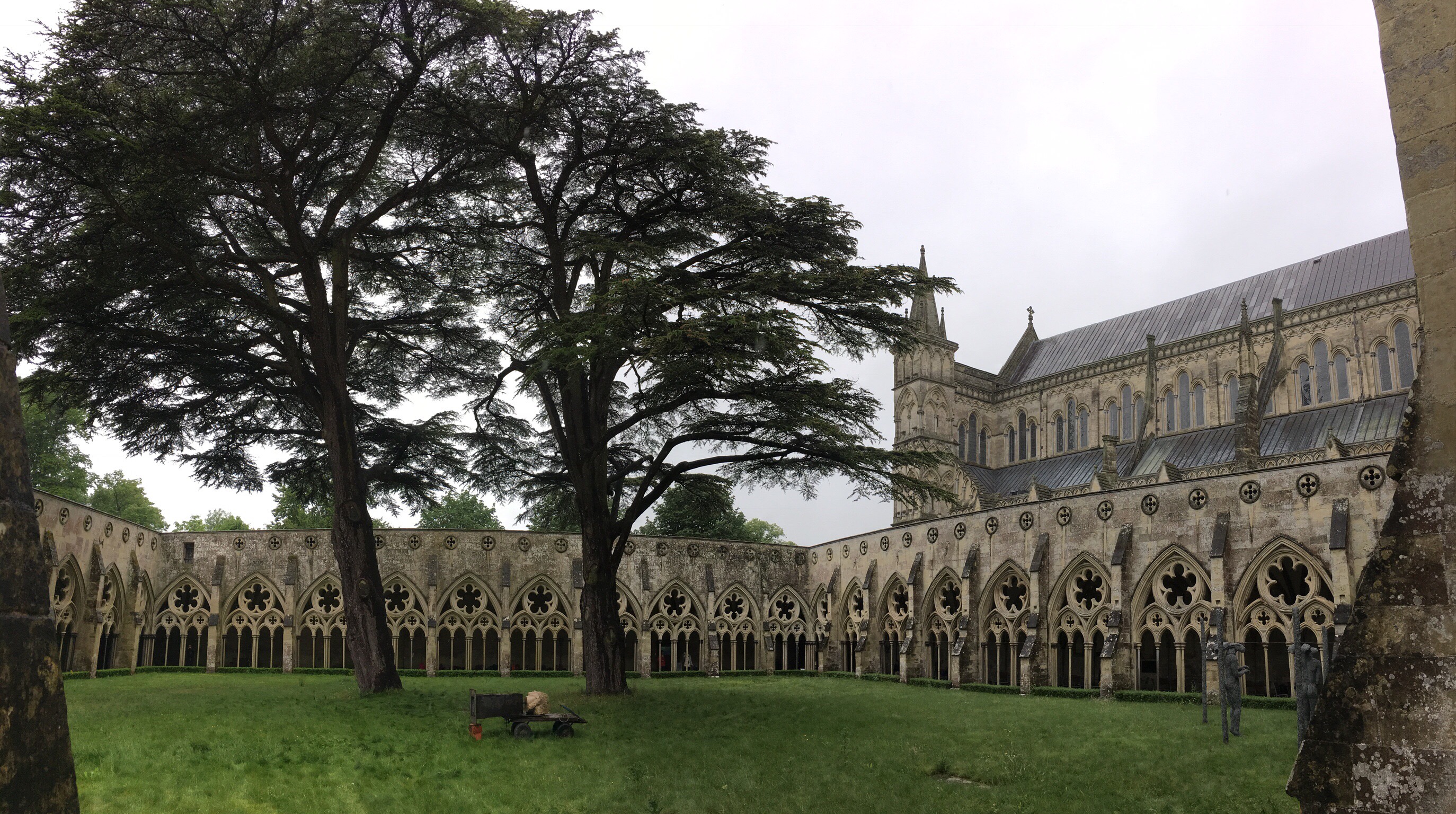
One of the four surviving original manuscripts of the Magna Carta was on display and well-worth a look. We were not allowed pictures of the actual document, of course, but it was obviously the best-preserved of the remaining copies. We look forward to seeing a couple of the others while on this trip.
Leaving Salisbury, we drove out to Glastonbury for a slightly different church tour. I’m going to give a shout-out to Mike here for being a versatile driver and having nerves of steel . . . We never once ended up on the wrong side of the road, and he navigated the super narrow roads like a pro. My job was just to sit and worry and hold the GPS.Our first stop was the ruins of Glastonbry Abbey. We picked up a walking tour and learned some history from a “monk” who led us around the grounds. According to legend, Joseph of Arimathea (the biblical figure who provided Jesus with a tomb) explored Northern Europe and found his way to Glastonbury. When he found a spot he liked, he drove his staff into the ground. The staff turned into a thorn tree, and the site was declared a miracle. Monks built a chapel around the tree, but the structure eventually burned. They began rebuilding the site with stone, but needed proper funding from the church to continue. In 1191, at a time when they would be desperate for funding to remain operating, the monks “discovered” a grave marked as that of King Arthur. Whether they really found such a grave or not, and whether or not that grave had any connection to the King Arthur of legend, that link kept the abbey solvent until Henry VIII had an argument with the abbey’s leadership and stopped all funding.
The King Arthur legend survives…
We next took a bus out to Glastonbry Tor, a large hill that is prominent as you arrive from any direction. It is sometimes called The Isle of Avalon by historical texts as well as obviously fictional writings. We were all fans of the tv program Merlin, so it was fun to see a site that had often been used in the show to designate King Arthur’s kingdom.
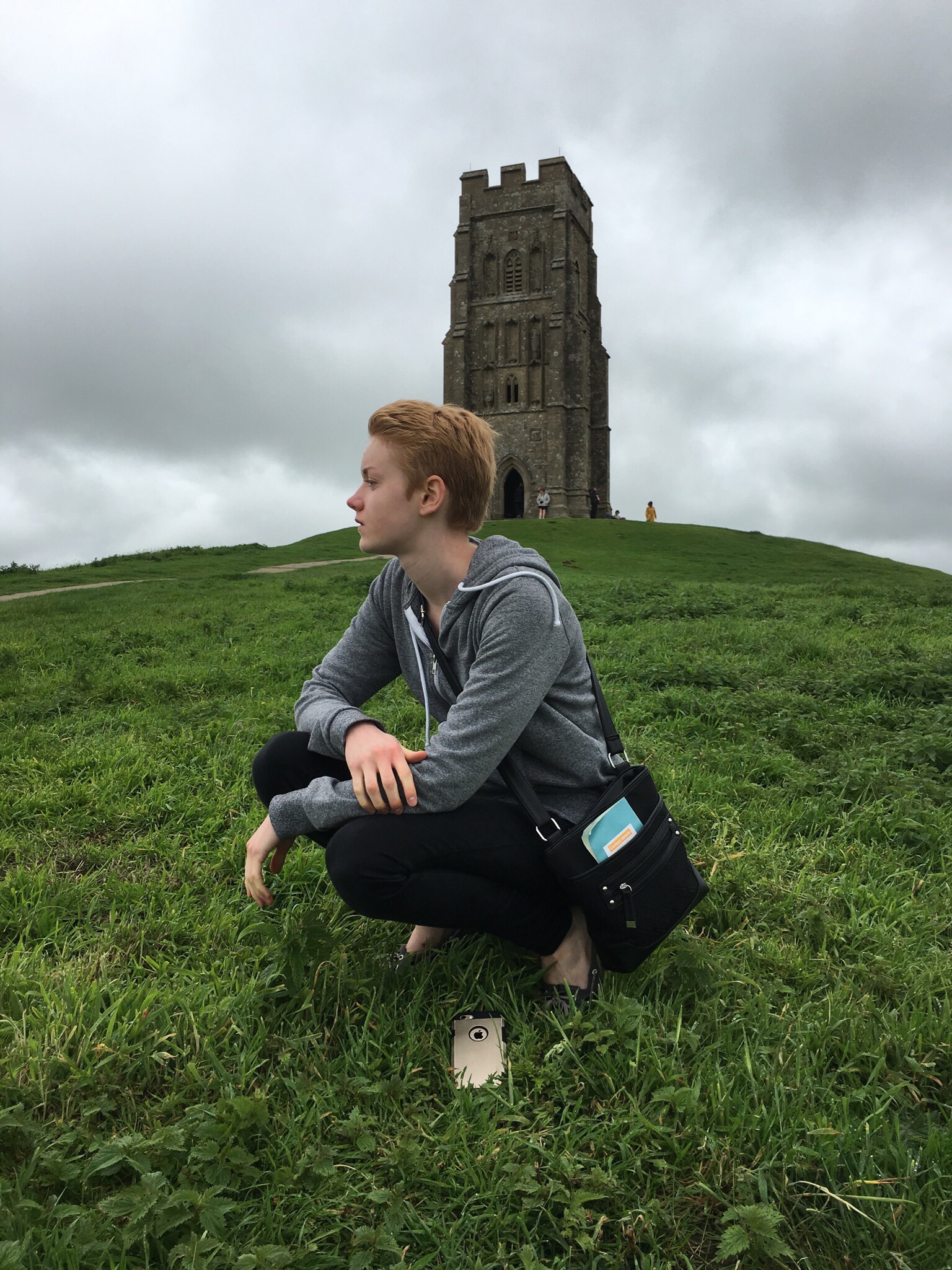
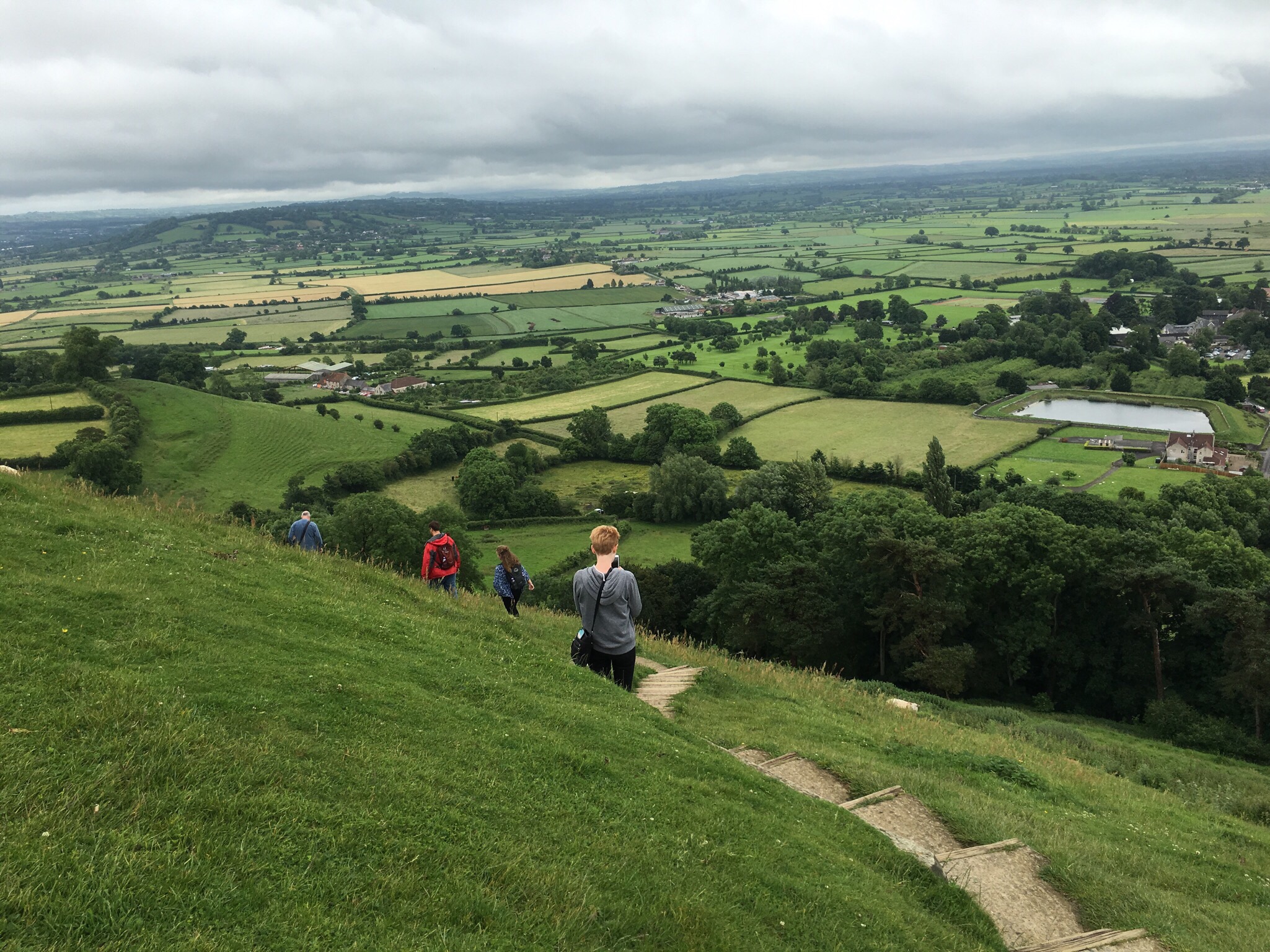
Coming down off the Tor, we realized we had gone down the wrong way to meet the bus, so we followed the road around the Tor after being told it would lead us to the Chalice Well, a site thought to have links to The Holy Grail and more Arthurian legend. We really had only set out to see the Tor, so we were just wandering at this point and walking to other recommended sites.
When we came to a small door marked White Spring, we mistakenly thought we had found the site in the tour pamphlet that called itself the Chalice Well. We ducked inside . . .and found ourselves in a dark room lit only by candles. A naked guy was submerged in a pool and was chanting. Huh. This did not look like the spot listed in the tour pamphlet, and we were soooooo obviously in the wrong place. We backed out quietly and continued down the street.
We looked it up later and discovered there were two wells within a short distance: one was heavy in calcite, and the other heavy in iron. Both were once considered to be powerful centers of healing. People bathe what are considered the healing waters of the calcite location, White Spring, and they drink from the iron rich Chalice Well.
We found the Chalice Well gardens, and they were very pretty, so while we walked around a few minutes, we did not stay long. The legend here is that when Joseph of Arimathea brought the cup used at Christ’s last supper and washed it in the well, the water turned red. People were filling jugs with the water from the well and were meditating over the King Arthur inscription on the well cover. Our purpose to visit was for fun and curiosity, and our, “Yeah, Merlin!” mindset felt inappropriate contrasted with the seriousness of the other people there, so we just quietly had a look and moved on.
We next drove 5 miles up the road to Wells to see its cathedral which was built between 1176 and 1490. It replaced a smaller church built in 705. It had a very different feel and look to Salisbury. The choir was rehearsing while we visited, so we had the opportunity to wander quietly as we listened.
Attached to the cathedral was an interesting placed called the Vicar’s Close. It is a short street (460 ft) and is said to be the oldest continually inhabited street in all of Europe (constructed in 1348). As we made the short walk, schoolchildren moved in and out of the doors because it is now a part of Wells School.
We left Wells and checked into the Holiday Inn in Amesbury. Three miles before reaching the hotel, we passed by crews finishing setup for lights and crowds expected at Stonehenge.
Stonehenge is usually roped off to most visitors and asks an entry fee. However, on the nights of the winter and summer solstice, people are welcome to gather at the stones. This seemed like an experience we could not miss if we were in the area, so after a quick dinner at Pizza Hut (Julia claimed it was way better than American Pizza Hut, but we claim its un-greasy crust and low amount of cheese sets it far below), we crashed at the hotel and set our alarms for 12:30 am.
At 1:00, we pulled on jeans and coats and drove out to the Stonehenge Solstice car park. We were worried about fighting crowds to get there, but we suspiciously hit no traffic all the way from the hotel and up to the roped off parking area. We were also a bit worried that, once again, this might not be our scene (see naked guy in the White Spring above), but the group forming at Stonehenge seemed to be just about everyone (dudes in wizard costumes, little old ladies with walking sticks and fanny packs, partying teens and twenty-somethings, parents chaperoning their teenagers, hippy families with babies in backpacks, etc, so we decided to give it a go and walk out to see what was going on. It turned out to be a fun night. We all wandered around the inner circle of the stones for a while, then we all crashed out of the grass to rest for an hour, and eventually Mike and Julia went to the middle of the stone circle to hang out while Elizabeth and I stayed outside. Elizabeth and I got the first glimpse of the sunset, and Mike and Julia had a great time people watching from their location. For those who want to know: No, alcohol wasn’t a big deal, and security seemed to pretty quickly confiscate containers or escort obviously intoxicated people away. However, security turned a blind eye to the smoke billowing up from just about everywhere. As Julia said as we left, “No amount of soap or prayer is going to get the weed smell out of my clothes this morning.” I guess we’ll just file that away as an educational experience for the kids.
We found out later that crowds were down by half compared to previous years due to the National Trust asking for a 15 pound parking donation for the first time ever. The legitimate pagan groups who normally attend found other places to bring in the solstice because they refused to “pay to pray.” Many of the locals who typically come out just didn’t make the effort due to the high costs. Therefore, it felt like we were surrounded by a bunch of other tourists . . . because we were. It was still pretty cool, though.

